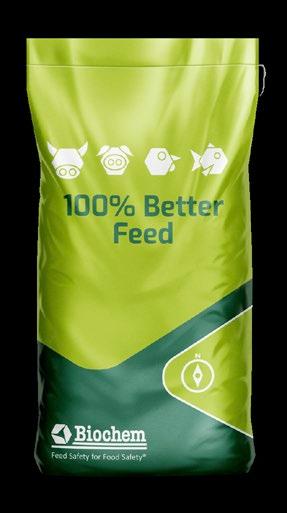Prediction of phosphorus and calcium requirements for swine and poultry using mechanistic modeling
p.4

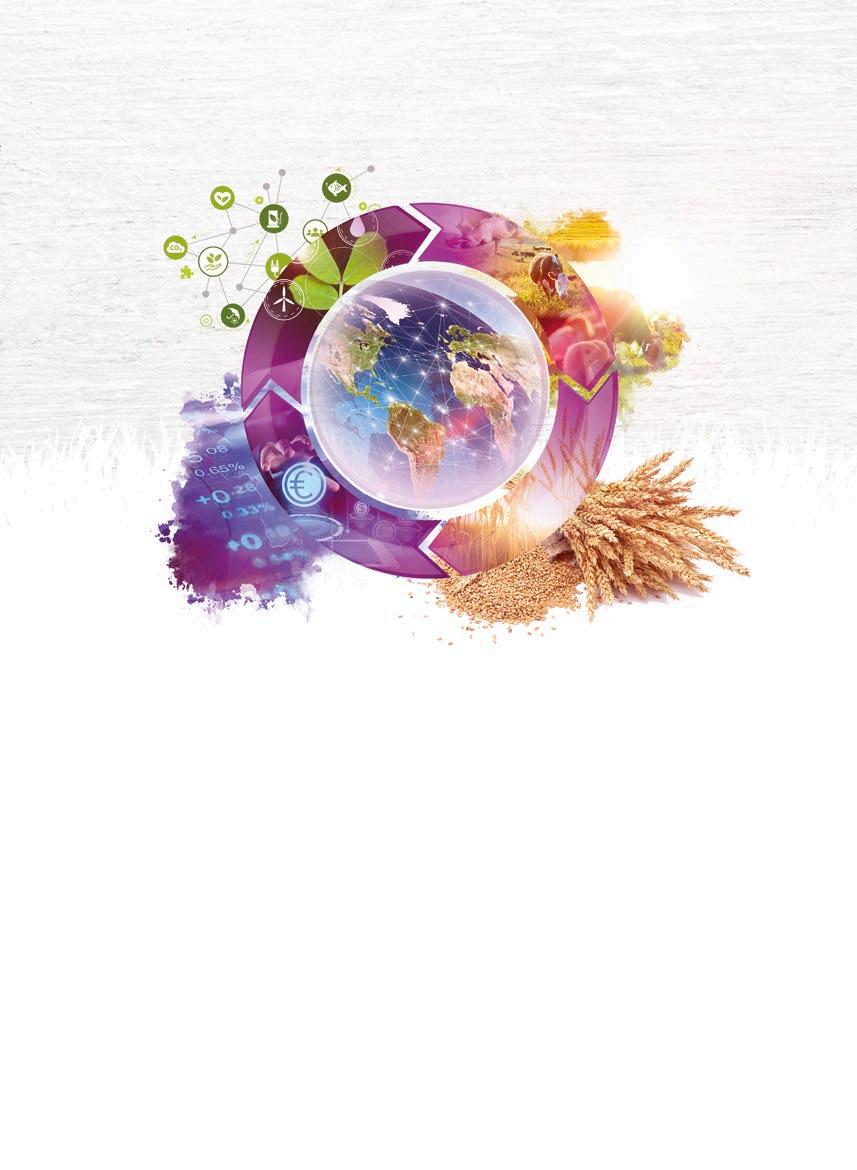







Production and value chains as well as social and environmental demands on livestock farming are changing rapidly worldwide. This makes it all the more important for farms and agribusinesses to play an active role in shaping the future.
Coming from a few years of hardship, the livestock industry faces challenges regarding animal health, welfare and environmental issues. As well as acknowledging the fact that public acceptance of animal production and social demands have become all the more unrelentless. Wearing out a sector that on the contrary stands out for being dynamic, resilient and a reliable economic engine in many regions of the world.
As the year comes to an end, the animal nutrition sector has dealt with highly complex and convoluted scenarios. Being dragged by conjunctural tides, which are not new to our sector yet that does not make them less serious. Significantly affecting production costs and the economic viability of the agrifood industry. Companies have fought intensely without losing the objective of guaranteeing food supply, food security, animal health and animal welfare, while preserving the environment. Which is by no means an easy task.
Historically, the livestock industry and its associated sectors have been tenacious and resilient and there is no doubt that they will be able to move forward as they has done before. Overcoming these current challenges, based on innovation, technification, and improved efficiency. Working hand in hand with science, establishing long term projections and anticipating future challenges. Which will lead to a shift in paradigms.
Unfortunately we have become somewhat used to limiting ourselves, as we have faced strict regulations and legal limitations regarding food safety during the last decades.
Holding the agricultural sector back, keeping it from thinking big and seeing opportunities beyond. Meanwhile other sectors are strongly considering guaranteeing selfsufficiency and life on earth based on the regeneration of the atmosphere, water recycling and the generation of sustainable edible material.

Looking beyond, while not being ashamed to learn from other sectors regarding technological advances and ambitious approaches, can be the driving force to break barriers. Being able to overcome obstacles associated with achieving “real” sustainability and circularity in production systems. Finding the scientific basis to modify regulations and stereotypes. Allowing a true revolution within animal nutrition and production.
Under such a context nutriNews International had the opportunity to begin its publishing journey within the international animal nutrition sector at EuroTier 2022! Where we obtained first hand inputs from experts in the field regarding the industry’s current challenges as well as their opinions on what are the prospects for animal husbandry and livestock management around the world.
This experience has reinforced our drive to become a reference of choice for all actors involved in the animal nutrition sector. Delivering cutting edge information that contributes to constant improvement while looking ahead ambitiously with the aim of achieving long lasting impacts on sustainability, social acceptance and food security.
We hope this second issue continues to ascertain our path within the animal nutrition sector and that you may find in it a useful and enjoyable tool!
Marie-Pierre LétourneauMontminy1 , Nilva K. Sakomura2 and Matheus Reis 3
1University of Laval, Canada

2Universidade Estadual Paulista, UNESP, Jaboticabal, Brazil
3Universidade Estadual Paulista, UNESP, Jaboticabal, Brazil

María de Jesús Nava-Ramírez1



Guillermo Tellez-Isaias 2 Dr. Carlos López Coello1 Alma Vázquez Duran1 and Abraham MéndezAlbores1


1 National Autonomous University of Mexico (UNAM), 2Department of Poultry Science, University of Arkansas, USA
 Edgar Orlando Oviedo-Rondón Prestage Department of Poultry Science, North Carolina State University
Edgar Orlando Oviedo-Rondón Prestage Department of Poultry Science, North Carolina State University
Edgar Orlando Oviedo-Rondón Prestage Department of Poultry Science, North Carolina State University
Edgar Orlando Oviedo-Rondón Prestage Department of Poultry Science, North Carolina State University
Prestage Department of Poultry Science, North Carolina State University
Chad Paulk
Assistant Professor of Feed Science and Management in the Department of Grain Science and Industry at Kansas State University






Ilias Kyriazakis


Professor, School of Biological Sciences
Institute for Global Food Security, Queen’s University, Belfast,BT9 5DL, United Kingdom
Caroline Beatriz de Sousa Faria1 , Aline Maria Silva Barbosa2 , Izabel Cristina Tavares 3
1Master in Nutrition and Production of non-ruminants- Universidade Federal de Lavras (UFLA), ASIH/NESUI
2Master in Nutrition and Production of non-ruminants – UFLA, ASIH/NESUI
3Graduate of Veterinary Medicine UFLA, ASIH/ NESUI
Juan Gabriel Espino

Animal nutrition consultant

Fernando Bacha Baz1 and Carlos Fernández 2 1Nacoop, S.A.
2 Professor at Universitat Politècnica de Valencia
 Edgar Orlando Oviedo-Rondón
Edgar Orlando Oviedo-Rondón
Laval,
Calcium (Ca) and phosphorus (P) should be provided in feed to swine and poultry in precise and balanced amounts according to the growth phase and rate or production status. Both minerals are implied in ossification, eggshell formation, and milk production.

Consequently, accurate determination of needs for both minerals has animal well-being and production impacts.
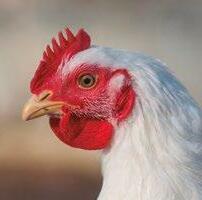
Additionally, both minerals interact for proper absorption and utilization and should be studied together, but many other dietary factors can impact their requirements.
For example, phytase supplementation, vitamin D sources, levels of protein, fat, and organic acids.
The solubility of the minerals and the particle size may also impact their utilization.
The efficiency of phytases or the biopotency of vitamin D sources can impact these needs.
The requirement or optimum levels of Ca and P also vary depending on the criteria to optimize. Bone ash or bone strength requires higher levels than growth or feed utilization efficiency, which varies with age.
Lately, another criterion is to minimize P excretion into the environment.
The complex characteristics to determine Ca and P requirement makes modeling one of the best methodologies to attempt complete understanding and more accurate calculation seeking multicriteria. Models can aid in calculating the effects of phytases, depletion, and repletion strategies to prime the animal to be more efficient, and finally combining these strategies into a precision feeding model that provides daily tailored diets for individual pigs or flocks of birds with similar conditions. This tool also predicts the amount of P excreted in the slurry.
Phosphorus has received more attention lately due to its impact on the sustainability of animal production for two different reasons.
On one side, phosphorus is a non-renewable resource, and mined sources have become scarce worldwide. The prices have skyrocketed in the past months, with a tendency to reach the historic maximum observed in October 2008, or US$450 per ton (Figure 1)
On the other side, phosphorus excretion can quickly cause over-fertilization in soils because plant uptake can be lower than deposition, and water has great eutrophication potential, which leads to an increase in aquatic plant growth.
minerals
2001/1 2007/11 2022/10
450
5
On the other hand, Ca is abundant in nature, its excretion does not threaten the environment, and it’s almost always one of the cheapest nutrients in monogastric diets.
Nevertheless, Ca has essential metabolic functions in animals, and its dietary level impacts the absorption and utilization of P and many other minerals.
Ca is indispensable for bone mineralization, eggshell formation, muscle contraction, and nerve impulse propagation
In poultry, high Ca levels increase gizzard pH and reduces the activity of some exogenous phytases and other exogenous or endogenous enzymes.

A mechanistic model approach aims to represent the mechanisms of a system connecting the underlying mechanisms that control it. The research group led by Dr. MariePierre Létourneau-Montminy at the University of Laval, in collaboration with other Universities and research institutes like Universidade Estadual Paulista, UNESP, in Brazil, INRAE, in France, Agriculture and Agri-Food Canada AAFC, and the University of Maryland, has developed mechanistic mathematical models that simulate the fate of dietary P forms, phytate P (PP) and non-phytate P (NPP) from plant, mineral, and animal origin, in the gastro-intestinal-tract.
The proposed model integrates and predicts the impact of the most relevant physiological processes involved in P digestion and absorption, including P dietary forms, exogenous phytase, and the dietary concentration of Ca. It also predicts the impact of transit time and pH of the different dietary sections. The output is the standardized P and Ca absorbed. It can be used as a prospective tool to study P digestibility for different feedstuffs and feeding strategies and the effect of specific digestive processes on P digestive utilization.
The assessment of Ca and P requirements must consider that changes in skeletal tissue are not directly proportional to lean growth. The models developed by the group of Dr. Létourneau-Montminy allow P and Ca requirements for soft tissue growth and bone growth to be predicted independently. These models also include the factorial approach, which consists of quantification and adding the requirements for each physiological function. This means maintenance, growth or gain, and egg production.
This new model for pigs estimates apparent digestible Ca and P requirements, which can be converted to the standardized total tract digestibility (STTD) or total requirements. The only input required is the initial body weight, from which body protein, lipid, water, and ash (soft tissue and bone) are estimated.

Soft tissue growth is estimated by applying the principles of the InraPorc Model. However, other models, such as NRC (2012) or even user-specific equations tailored to animal growth in a specific setting, may be adequate.
Estimated protein and lipid gains are used to assess P and Ca retention in soft tissues. In parallel, the Ca requirement for bone is estimated with the bone Ca potential deposition curve also available. The deposition of P in bone is estimated at a fixed ratio of 2.16 to Ca deposition.
The maintenance requirements, equivalent to the obligatory urinary losses, are set at 0.5 mg for P and 2 mg for Ca per kg of body weight. The sum of the maintenance and growth requirements (of soft tissue and bone) thus provides apparent digestible P and Ca requirements. The Ca:digestible P requirements ratio increases with body weight due to protein deposition, in which 30-40% of the P is deposited, and decreases while bones continue to grow after 70 kg of BW. These requirements can be converted to a standardized or total basis.
Initial BW
Soft tissue growth
Input: Initial protein, lipid, water, ash Water deposition Protein and lipid deposition
Whole-body ash growth
BW Ca and P maintenance requirements
Ca and P bone deposition
Ca and P soft tissue deposition
Production requirements
Outputs:
ATTD P, STTD P
ATTD cA, sttf Ca, Total Ca
Figure 2. General layout of the mechanistic model predicting total calcium (Ca) and apparent and standardized digestible phosphorus (ATTD and STTD P) requirements of growing pigs.
The evaluation results of this model confirmed the need for a nonfixed Ca:P requirement ratio. This model can be adaptable to different production objectives, such as 100% or 85% mineralization, without decreasing the share of Ca or P destined for soft tissues.
Although a single deposition potential has been established, it will become necessary to consider animal genetics and/or sex in further validations of the model.

The sensitivity analysis of the model showed that protein deposition influenced apparent total tract digestibility ATTD-P variance by 15% for pigs at 30 kg, 6% at 60 kg, and 1% at 120 kg based on protein deposition variation observed in previous trials. The decrease in the influence of protein deposition on P with BW increases coincides with the linear increase in the bone deposition. Moreover, the ATTD-P variance associated with protein deposition at 30 kg shows that animal growth will significantly impact P recommendations.
The mechanistic model partitioning Ca and P in the broiler body enables us to understand the dynamics of the utilization of these minerals in the body compartments and predict and even influence the Ca and P excretion to the environment. A model was developed to estimate the metabolic fate of Ca and P in broiler chickens, opening an opportunity to understand and quantify the requirements of those minerals as broilers aged. The model is described in Figure 3
The model explains the digestion of both minerals, absorption, transport to soft tissue, and body ash accumulation. The body ash and soft tissue are divided into four ash compartments: bone, body protein or lean muscle, body lipid, and feather protein.
The digestion module is based on data generated with a meta-analysis using preceacal digestibility data. The soft tissue module is based on a growth model included in the software Broiler Growth ModelBGM, available online and developed by the group led by Dr. Nilva Sakomura from Universidade Estadual Paulista, Jaboticabal, São Paulo, Brazil. The body ash modules are a summatory of the impact on bone ash and soft tissues, including protein and lipids.
Calculating the Ca and P requirement for maximum bone deposition is based on determining and adding maintenance and gain requirements.
This model can predict the daily requirement of Ca and P to maximize bone mineralization in growing broilers. It also predicts the effects of high Ca on growth performance by reducing feed intake while maximizing bone mineralization.
In broilers, the literature showed that the growth of body ash is closer to protein growth than in swine based on allometry equations. Therefore, although the prediction of body ash growth independently of protein growth offers better accuracy, further investigation is ongoing to understand this issue better.
The proposed models can be integrated into software that can aid in making all these calculations in seconds using all inputs desired. This approach has more potential to enhance understanding and integrate the knowledge of feed and animals for a more accurate estimation of nutrient needs. Similar models are under development for layers and sows and will be described in a future issue of NutriNews International.
Ca in Intestine Ca in Intestine P Fecal Ca Fecal Ca Urine
Ca extracellular P extracellular P Urine
CaBn
MisBProt MiscLip MiscfProt PBn
Ash in Body Lipid Ash in Feather Protein
Body Ash Potential Body Protein Body Lipid feather Protein
CaBProt CaLip CafProt PIProt PLip PBProt MiscBn Ash in Bone Ash in Body Protein Body Ash Soft Tissue
Figure 3. Model diagram indicating the three main model steps (thin solid line boxes), digestion, body ash, and soft tissue. Large solid line boxes are state variables, dashed lines are zero pools, and dotted lines are auxiliary variables. Arrows indicate flows.
Prediction of phosphorus and calcium requirements for swine and poultry using mechanistic modeling DOWNLOAD ON PDF
The 7th European Federation of Animal Science (EAAP) Symposium on Energy and Protein Metabolism and Nutrition (ISEP 2022) was held from September 12 to 15 in Granada, Spain. This meeting is organized every three years around the world in collaboration with other Animal Science Associations. ISEP inherited the previous symposiums that focused either only on Energy or Protein since 1958. The first ISEP was held in Rostock, Germany, in 2003. Since then, Symposiums have been held in Vichy, France; Parma, Italy; Sacramento, USA; Krakow, Poland; and Belo Horizonte, Brazil.
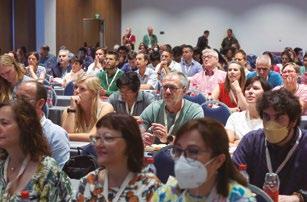
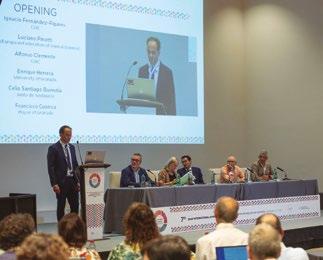
Several Spanish Scientists from Consejo Superior de Investigaciones Cientificas (CSIC), Professors, and Students from the University of Granada were involved in the Organization of this event. Dr. Ignacio Fernández-Fígares from the CSIC was the head of this Organizing Committee. There were over 300 registrations from 28 countries on five continents. Participants came from Spain (32%), the USA (13%), France (10%), The Netherlands (6%), Canada (5%), Germany (5%), and other countries (29%). Only 21% of the participants were students, and 79% were professionals, with 28% of registrations sponsored directly by multinational companies related to animal nutrition.

Additionally, to the great experience of visiting historic Granada, a cross-road of civilizations since the bronze age, the program allowed interaction among scientists to foster future collaborations.


A Course on Indirect Calorimetry and selected applications was offered. This time Wageningen University (The Netherlands) and INRAE (Rennes, France) jointly organized this workshop. The course aims at educating those (PhD students, technical staff, researchers) who use measurements of gaseous exchange (CO2, O2, CH4) in their research program and are setting up facilities in which those measures can be performed, either with or without climate control.
Lectures by prestigious scientists opened each one of the seven sessions. Additionally, information about the metabolism of protein, amino acids, and energy for monogastric species and ruminants was also presented as posters.
These posters included communications related to research results on nutrition, metabolism, environmental impact, modeling, and data analysis on swine, poultry, fish, horses, dogs, and cats. In ruminants, the posters had information on diverse species like beef and dairy cattle, goats, and sheep.
For the first time the Rank Lecture in Animal Nutrition was awarded to Dr. Christiane L. Girard from the Centre de recherche et développement de Sherbrooke, in Québec, Canada. Dr. Girard presented the State of knowledge on the importance of folates and cobalamin for dairy cow metabolism. Girard's past research has enlightened the understanding of how vitamins can modify rumen microbiota metabolism and enhance dairy cow performance. NutriNews International interviewed Dr. Girard during the event.
The ISEP Symposium is one of the most important forums to discuss the latest trends in energy and metabolism, and nutrition of farm animals, and other nutrition-related disciplines. Like on previous occasions, this was a very fruitful event. The meeting was structured on seven topics: protein and energy metabolism in ruminants; nonruminants; feed processing, additives, and novel feeds; reduction of the environmental impact of livestock; the impact of environmental challenges on livestock; methodological aspects of research and smart nutrition; and modeling.
Dr. Hélène Lapierre from Agriculture and AgriFood, Canada, presented the main lecture on protein and energy metabolism in ruminants. Her talk was entitled the multiple usages of the efficiency of utilization of essential amino acids in dairy cows. In non-ruminants, Jan Erik Lindberg from the Swedish University of Agricultural Sciences presented Nutrient and energy supply in monogastric food-producing animals with reduced environmental and climatic footprint.
Dr. Diego Morgavi from INRAE Centre AuvergneRhône-Alpes, France, presented an additional lecture on this topic about how Reducing enteric methane emissions improves energy.
In the Feed processing, additives, and novel feed, the main lecture was on the Composition and utilization of animal diets in the context of circular food production systems, presented by Dr. Paul Bikker of Wageningen Livestock Research, Netherlands.
The opening lecture for the topic impact of heat stress and other environmental challenges on energy and protein metabolism was the physiological impact of amino acid supply during heat stress in ruminants, presented by Dr. Juan J. Loor from the University of Illinois, USA.
In Methods and technologies for research and smart nutrition, Dr. Cornelia C. Metges had the main lecture: Methods and biomarkers to investigate metabolic and gut health function in pigs. Finally, Dr. Luis Tedeschi from Texas A&M discoursed Harnessing extant modeling approaches for sustainable animal production in the final topic on Modelling energy and protein requirements of farm animals.
We also talked with Dr. Aline Remus research scientist at Agriculture and Agri-Food Canada. Aline discussed her research to understand the variability of nutrient utilization in swine. With Dr. Vanessa Lagos from Schothorst Feed Research in the Netherlands, we talked about her job at this prestigious company dedicated to research and education in poultry, swine, and ruminants. Dr. Luciano Hauschild, a professor at the State University of Sao Paulo in Jaboticabal, Brazil, highlighted his research in amino acid metabolism in pigs and his modeling work. Finally, Dr. Jaap Van Milgen, a wellknown Research Scientist at INRAE, discussed his presentation about the current status of food-animal research in Europe, the challenges that we face, and the perspectives that the groups he leads have in this respect. You can find all these interviews on our web:
Dr. Craig N Coon
Dr. Ana García Ruiz and Dr. Wilfredo Mansilla
NutriNews interviewed several scientists during ISEP about their presentations in this meeting. Dr. Craig Coon is a well-renowned poultry nutrition Professor at the University of Arkansas that came to present his long-term research developing a new Net Energy system that he calls Productive Energy because it takes into consideration the metabolic impact of high protein intake in broilers and fast-growing birds. Dr. Ana García is the Director of the Trouw Poultry Research Center in Toledo, Spain. Together with her colleague Dr. Wilfredo Mansilla we discussed the interesting, diverse research in poultry nutrition that they developed in that Center.
Dr. Walter Gerrits is a professor and chairholder of the Animal Nutrition Group at Wageningen University in the Netherlands. We spoke about his work, mainly on gas emissions in grazing cows and how they fit with energy metabolism. Dr. Gerrits delivered several talks in this meeting and coordinated the Course on Indirect Calorimetry.
Prediction of phosphorus and calcium requirements for swine and poultry using mechanistic modeling
DOWNLOAD ON PDF
Dr. Walter Gerrits
Dr. Aline Remus
https://www.youtube.com/ watch?v=zEekSePbD34&t=301s&ab_ channel=nutriNewsInternational
https://www.youtube.com/ watch?v=Brefwbg3t7A&t=3s&ab_ channel=nutriNewsInternational
https://www.youtube.com/ watch?v=jQ3tYxT4yio&t=2s&ab_ channel=nutriNewsInternational
https://www.youtube.com/ watch?v=940NwsmKsZQ&t=1s&ab_ channel=nutriNewsInternational
Dr. Vanessa Lagos
Dr. Luciano Hauschild
Dr. Jaap Van Milgen
https://www.youtube.com/ watch?v=4a2dSzOjVvQ&t=103s&ab_ channel=nutriNewsInternational
https://www.youtube.com/ watch?v=ELqxoK9EQ8o&t=97s&ab_ channel=nutriNewsInternational
https://www.youtube.com/ watch?v=BYNLtzwOFN4&ab_ channel=nutriNewsInternational
The next ISEP meeting will be held in Rostock, Germany, in 2025. We hope this publication contributes to increasing the interest of applied nutritionists to seek and obtain the most updated information on nutrition in this meeting.




ProPhorce™ SR is the next generation of butyric acid products. It has more ‘horse power’ than coated butyric acid products, thanks to the esterifying technology.
ProPhorce™ SR: • delivers butyric acid precisely when and where it’s needed • is odorless, stable and easy-to-handle
Road tested: • increase daily weight gain • improve FCR and gut health

 Edgar O. Oviedo-Rondón North Carolina State University
Edgar O. Oviedo-Rondón North Carolina State University
Mathematical modeling is a technique essential to understand intricate problems or situations like we observe in animal nutrition. When multiple factors can affect a response in so many different ways it is difficult to estimate the responses. Modeling tries to simplify reality to integrate the main interactions. It has been used in animal nutrition for over 100 years to determine nutritional requirements for almost all species, create decision support systems, teach, and integrate scientific information. However, despite its importance and its applicability, currently, there are few learning opportunities to receive training in modeling principles in animal nutrition.

The MODNUT workshops started in 1979 when animal researchers and mathematical modelers worldwide proposed a workshop to discuss the integration of their respective fields and share their most recent findings. Thus, a premier event named the “Workshop on Modeling Nutrition Digestion and Utilization in Farm Animals” (MODNUT) was held in Hurley, United Kingdom.
Five years later, Drs. Lee Baldwin and Tony Bywater coordinated the second MODNUT in Davis, California. Since then, researchers from all across the globe have gathered quinquennially at this very fruitful scientific forum to discuss the application of modeling across multiple disciplines of animal science. Since it started, MODNUT has been held across the world in locations such as:
New Zealand in 1989; coordinated by Drs. Bruce Robson and Dennis Poppi Denmark, 1994; coordinated by Dr. Allan Danfaer
South Africa, 1999; coordinated by Dr. F. Richardson
Netherlands, 2004; coordinated by Drs. Jan Dijkstra, André Bannink and Walter Gerrits
France, 2009; coordinated by Dr. Daniel Sauvant
Australia, 2014; coordinated by Dr. Dennis Poppi
Brazil, 2019; coordinated by Dr. Izabel Teixeira.
From September 18th to 21st, the 10th MODNUT was held in Alghero, Sardinia, Italy, organized by Dr. Antonello Cannas. A total of 112 participants gathered in Sardinia, while 35 were online, from those participants, 32% were students. Participants came from 19 countries, including Italy (48%), the United States (29%), France (11%), Canada (11%), and Brazil (11%).

The program included lectures, short communications, poster presentations, networking activities, and a formal workshop. Ninety-eight abstracts were received, and a Supplement of the the Peer-reviewed and Indexed Journal Animal is being prepared with the papers presented.

The workshop is divided into six sessions grouped by monogastric, ruminants, or strategic topics. Each session has one invited presentation and short communications selected for each topic. A great amount of interesting information for all sessions was also presented as posters

The first session was related to nutrient intake, digestion, utilization, and metabolism. Dr. Aline Remus delivered the main presentation from Agriculture and AgriFood Canada. Dr. Remus presented One size does not fit all: opportunities and challenges in models applied to sustainable pig precision nutrition. The short communications which followed, were related to the main topic:
The SNAPIG is a model to study nutrient digestion and absorption kinetics in growing pigs based on diet and ingredient properties.
The DyNAMPig Model to model the fasting substrate conversion for energy utilization in growing pigs using within-day kinetics.
A conceptual agent-based model for the prediction of optimal nutrient utilization during the grow-finish phase for precision feeding of swine
The mechanistic model of dietary phosphorus and calcium fate in growing broilers.

The second session, Livestock and the environment related to Ruminants, was introduced with the talk The Ruminant Farm Systems Project presented by Dr. Kristan Reed from Cornell University. The short communications included:

Between-cow response variation to methane mitigation feeding strategies

Models of enteric methane emission and nitrogen excretion by sheep and cattle: recommendations for the UK national greenhouse gas inventory.
Global sensitivity analysis of empirical enteric methane emissions models for silvopastoral systems.
The competitiveness of bioenergy by-products in optimized livestock diet formulation.
The third session was related to the future of modeling feeding systems. Dr. Mark Hanigan from Virginia Tech gave the introductory presentation Lessons for the development of the NASEM 2021 dairy protein model. The short communications were:
Evaluation of NASEM 2021 model predictions of dry matter intake and performance of dairy cows consuming fresh ryegrass-based diets.
Predictions of body mineral content in gilts from mating to the first parturition: evaluation of different requirement models.
An overview of data-driven and mechanistic modeling approaches of performance and sustainability in poultry.

Infection by Eimeria maxima changes the efficiency of utilization but not the
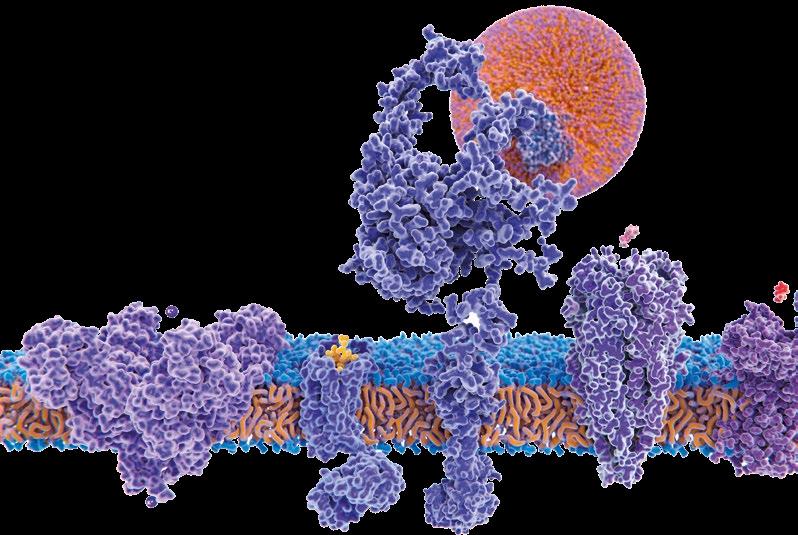
A revised model of heat production by growing sheep.
Modeling feed intake and milk yield depression in dairy cows under heat stress.
Application of feeding behavior as a method to predict individual steer feed intake.
Predicting dairy cow-pen dry matter intake distribution for precision nutrition modeling.
Evaluation of the NASEM 2021 dairy nutrient requirements model in lactating dairy cows fed diets with differing predicted absorbed amino acid efficiencies.
Modeling the response of milk yield and milk composition to dietary changes
The fourth session was related to Nutrient intake, digestion, utilization, and metabolism in Ruminants. Dr. Rafael Muñoz-Tamayo from AgroParis Tech presented Towards the next generation of rumen microbiome models for enhancing predictive power and guiding sustainable production strategies. Short communications talked about:
Implementing a synchrony index in Cornell Net Carbohydrates and Protein System for diet evaluation in lactating cows.


Sensitivity analysis of a mechanistic model of the in-vitro rumen fermentation: Study of the impact of 3 sampling methods on Sob indices of acc-ray.
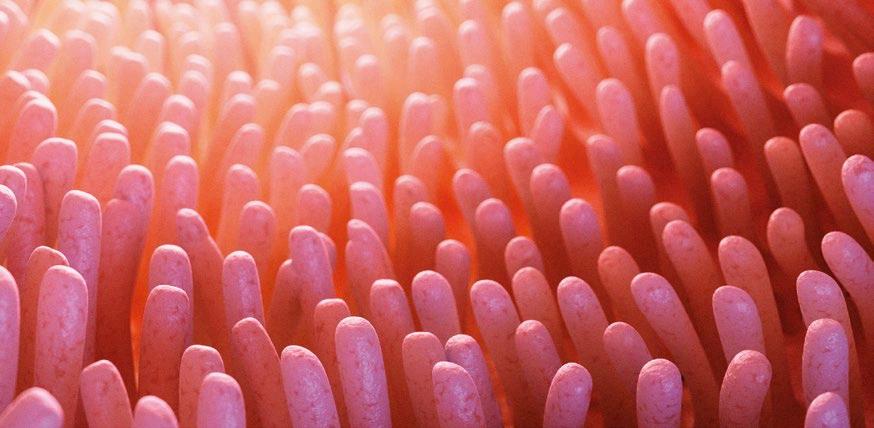
Prediction models of reticulorumen kinetics of particles and solutes in oats.

A mechanistic model to predict the postruminal flow of cobalamin. Predicting fiber digestibility in Holstein dairy cows fed dry-hay based rations.
The fifth session was on Modeling methodology and contamination. Dr. Luis Tedeschi gave the invited presentation Building mathematical models with confidence by choosing the appropriate modeling paradigm. The short communications selected for oral presentations were:
Comparison of imputation methods for missing production data in dairy cattle

An operational thinking approach to model heat stress accumulation in dairy cows during a heatwave event.
Nutritional protocols to increase marbling precursors in Nellore cattle: effects on ruminal fermentation and blood metabolites.
Milk losses due to mastitis in Holstein dairy cows: a modeling approach.
Predictive equations to detect the incidence of feedlot bloat in finishing cattle in individual cattle management systems.
Effects of breed growth rate and dietary lipid concentration on lipophilic contaminant accumulation into growing cattle: insight from a physiologicallybased toxicokinetic model.
The sixth session was related to Livestock and the environment, monogastric. The invited presentation was Modelling nutrition and management in swine production systems to reduce their environmental impacts from a life cycle perspective, presented by Dr. Florence GarciaLaunay from PEGASE INRAE. Three short communications were discussed in this session:

Integration of life cycle assessment into a mechanistic pig growth model to determine onfarm environmental footprint.
Evaluating low crude protein diets for fattening pigs using two life cycle assessment models.
Feeding growing pigs for maximum profit does not always minimize greenhouse gases.
A satellite course was offered. The first session of the Course was on the modeling process in nutrition from mind to math. This included talks on Non-linear thinking; Credibility, evaluation, and testing of dynamic simulation models; Integrating real-time precision livestock data into dynamic models using R. The second part was Methodology to develop nutritional models. It included Nonlinear parameter estimation with SAS and R,



Adeficiency such as the presence of mycotoxins in animal feed, can cause significant economic losses in animal production systems. Taking this into consideration, the poultry industry can suffer significant impacts due to these toxins.
 María de Jesús Nava-Ramírez1 Guillermo Tellez-Isaias2 Dr. Carlos López Coello1
María de Jesús Nava-Ramírez1 Guillermo Tellez-Isaias2 Dr. Carlos López Coello1
The study of organic adsorbents which are safe, cost-effective and efficient, has drawn great interest in recent years.
There are numerous organic adsorbents (plant fibers, yeast cell wall extracts and bacteria)which have evidenced potential mycotoxin adsorption efficacy (in vitro and in vivo). However, very few of these have been investigated under in vivo models.

Besides adsorbing mycotoxins, they can simultaneously adsorb micronutrients from the diet, with the potential risk of releasing toxic components, such as heavy metals or dioxins.

For such reasons, in recent years, the study of organic adsorbents has gained significant attention.

Bio-adsorption technology is considered an optimal and sustainable alternative due to the fact that various materials can be used.
Including:
Agricultural waste: straw, nut shells, hazelnuts, almonds, coconuts, fruit seeds and pulp, corn potholes, peas, etc.,
Micronized fibers that can be obtained from various plant materials such as wheat, barley, alfalfa, oats, and pea husks, among others. These materials are characterized by: high efficiency for the removal of certain mycotoxins, low costs, low inclusion levels, as well as preventing

Avantaggiato et al. (2014), used grape pomace (peel and pulp) as a multimycotoxin bioadsorbent in an in vitro model.
As part of their study, they used a mycotoxin mixture composed of:
Aflatoxin B1 (AFB1) Zearalenone (ZEA) Ochratoxin A (OTA) Fumonisin B1 (FB1) Deoxinivalenol (DON)
*At a concentration of 1 μg/mL of each toxin
Ochratoxin A (OTA)
Mycotoxin adsorption was reported to gradually increase with decreasing particle size (<500 um);
However, the five different particle sizes evaluated adsorbed significant amounts of AFB1, ZEA, OTA and FB1, while the adsorption of DON was negligible.
The maximum adsorption values recorded for AFB1, ZEN, OTA and FB1 were 82%, 70%, 61% and 28%, respectively.
Fumonisin B1 (FB1)
The trial which evaluated the effect of contact time between the bioadsorbent and the mycotoxins had a duration of 2 h.
In the initial stages of contact the adsorption of AFB1, ZEA, OTA and FB1, was fast, but it then became slower as it reached an equilibrium.
50% of adsorption occurred during the first 3 min and maximum adsorption was achieved at 15 min.
Mycotoxin adsorption experiments were performed at a temperature of 37 °C and various parameters were evaluated such as: the effect of particle size, contact time between the bioadsorbent and mycotoxins, pH of the medium and bioadsorbent dose.
The adsorption of mycotoxins was highly dependent on pH; regarding the adsorption of AFB1 and ZEA. It was observed that the adsorption potential of the bioadsorbent was stable despite pH variations(from 3 to 9);
However, the change in pH affected the adsorption of OTA and FB1.
Deoxinivalenol (DON)Overall, mycotoxin adsorption was significantly affected by the bioadsorbent dose. As the dose increased, the adsorption of mycotoxins was significantly higher for all cases.
Greco et al. (2019), conducted an in vitro study with 51 agricultural by-products, in order to test them as mycotoxin bioadsorbents (AFB1, ZEA, OTA and FB1). They used a concentration of 1 μg/mL per toxin.
Some of the tested by-products were:
Chickpeas
Beans
Onion leaves and cauliflower
Broccoli stalks
Asparagus and celery
Onion and fennel bulbs
Bean, potato and tomato skin
Almond shell
Artichoke residues
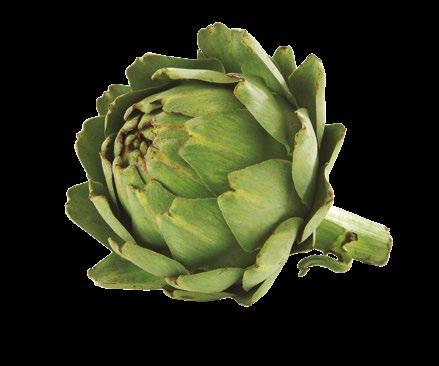
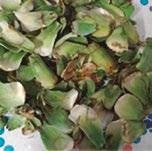
Orange and lemon residues
Pomegranate seeds
Banana peel
Of the 51 by-products which were tested, three were selected as promising mycotoxin bioadsorbents (grape pomace, artichoke residues and almond shells). These presented high levels of lignin and polyphenols.


From these three, the adsorption effectiveness for the following mycotoxins
For AFB1, ZEA and OTA, their adsorption was not affected by the pH of the medium (7 and 3). However, adsorption was affected by the pH of the medium for FB1, which was absorbed to a lesser extent.
The mycotoxin which was not adsorbed by the tested by-products was DON.
The highest percentage of adsorption occurred at a pH of 7 with the following values:
Grape pomace: AFB1 (94%), ZEA (84%), OTA (80%) and FB1 (35%);
Artichoke residues: AFB1 (55%), ZEA (89%), OTA (3%) and FB1 (1%);
Almond shell: AFB1 (87%), ZEA (76%), OTA (18%) and FB1 (20%).
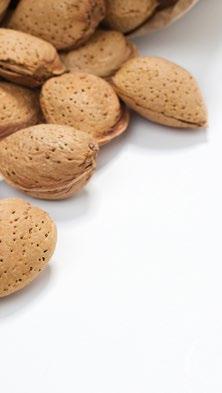
Fernandes et al. (2019), conducted an in vitro study with olive pomace and grape stalks (20 mg/mL) as bioadsorbents for AFB1, OTA and ZEA.

The efficacy of grape pomace overall, was associated with the presence of micronized fibers and phenolic compounds.
High adsorption percentages were achieved for all the pH values tested (2, 5, 7 and 8):
AFB1 (olive pomace, 74%; grape stalks, 96%),
ZEA (olive pomace, 93 %; grape stalks, 99%),
However, OTA was the mycotoxin that presented the lowest adsorption percentage at a high pH. Nonetheless it was absorbed well at a pH of 2.
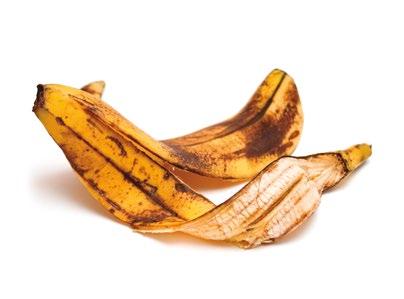
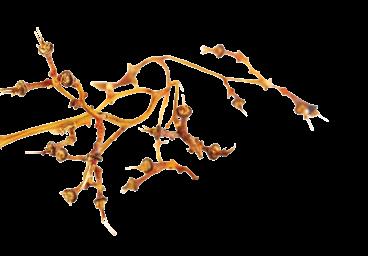
Shar et al. (2016), used banana peel (60 mg/mL) as a novel mycotoxin bioadsorbent for: aflatoxins (AFB1, AFB2, AFG1 and AFG2) and OTA. With concentrations of 0.5 μg/mL for each toxin.

The adsorption capacity of banana peel increased with a rise in pH.
The lowest percentage of aflatoxin adsorption occured at a pH of 3 with 24.9% and the maximum was at a pH of 9 with 74.6% for AFB1.
OTA was not adsorbed under any pH value.
Adunphatcharaphon et al. (2020), evaluated the adsorption capacity of the durian shell (Durio zibthinus) at 0.5% (w / v).
Durian husk was treated with acid to improve adsorption against AFB1, OTA, ZEA, DON and FB1.
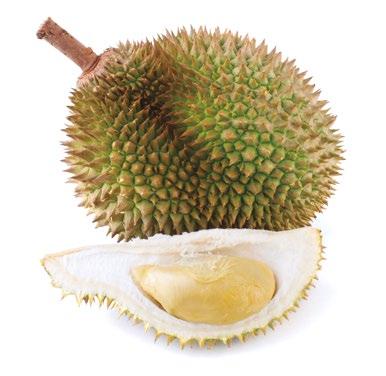
These were included in a solution containing 1 µg/mL of each toxin
Employing an in vitro model which simulated certain conditions of the GI tract.
The authors reported that the acidtreated shell exhibited the highest mycotoxin adsorption capacity: AFB1 (98.4%), ZEA (98.4%), OTA (97.3%), FB1 (86.1%) and DON (2%).
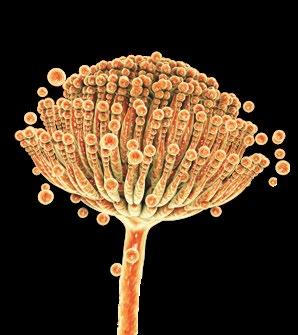
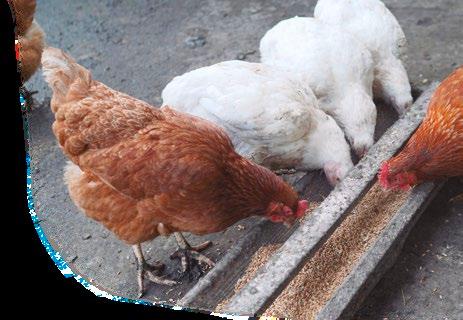

Our research group conducted a study using a diet contaminated with AFB1 (100 μg AFB1/ kg), to which three different 1.5% (w/w) bioadsorbents were added:
Banana peel
Hawthorn leaves (Pyracantha koidzumii)
Aloe vera powder

*To adsorb AFB1 in an in vitro model, which simulates the GIT conditions of birds.
Zavala-Franco et al. (2018) reported that, the highest adsorption value for AFB1 occured at a pH of 7 with 69%, 46% and 28% for Aloe, Pyracantha leaves and Banana peel, respectively.
It is interpreted that the adsorption of AFB1 is carried out by the interaction between the AFB1 molecule and the functional groups present in the bioadsorbent (hydroxyl, amino, carboxyl and carbonyl).
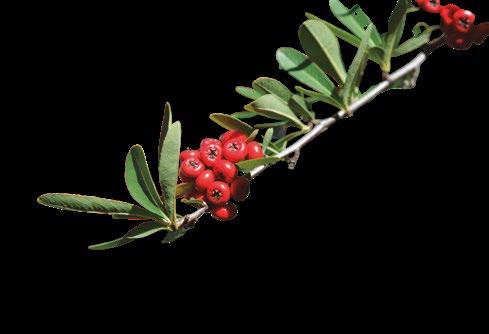

Other work carried out by our research team focused on studying the adsorption potential of firethorn (Pyracantha koidzumii), against aflatoxins (AFB1 and AFB2) at a concentration of 100 ng/mL.
Ramales-Valderrama et al. (2016), used the leaves and berries of this plant at 0.5% (w / v). The obtained results were:
The highest adsorption percentages were 86% and 82% using leaves and leaves + berries, respectively.
When the berries were used, AFB1 adsorption was significantly lower (46%).
Recently, our group conducted in vitro studies using lettuce (Lactuca sativa L. ), horsetail (Equisetum arvense L. ), and firethorn leaves (Pyracantha koidzumii) at low inclusion levels(0.1% and 0.5% w/v) for AFB1 adsorption (190 ng/mL) They employed a model which simulated certain conditions of the bird’s gastrointestinal (GI) tract.

Nava-Ramírez et al. (2021), reported that a lettuce-based bioadsorbent at an inclusion level of 0.1%, at a pH of 7 had the best AFB1 adsorption percentage (95%), compared to horsetail (71%) and firethorn (63%).
It is attributed that the adsorption of AFB1 by lettuce, is based on a set of interactions between the AFB1 molecule and the bioadsorbent through physicochemical interactions. Such as electrostatic, π–π interactions, hydrogen bonds and the formation of AFB1chlorophyll complexes.
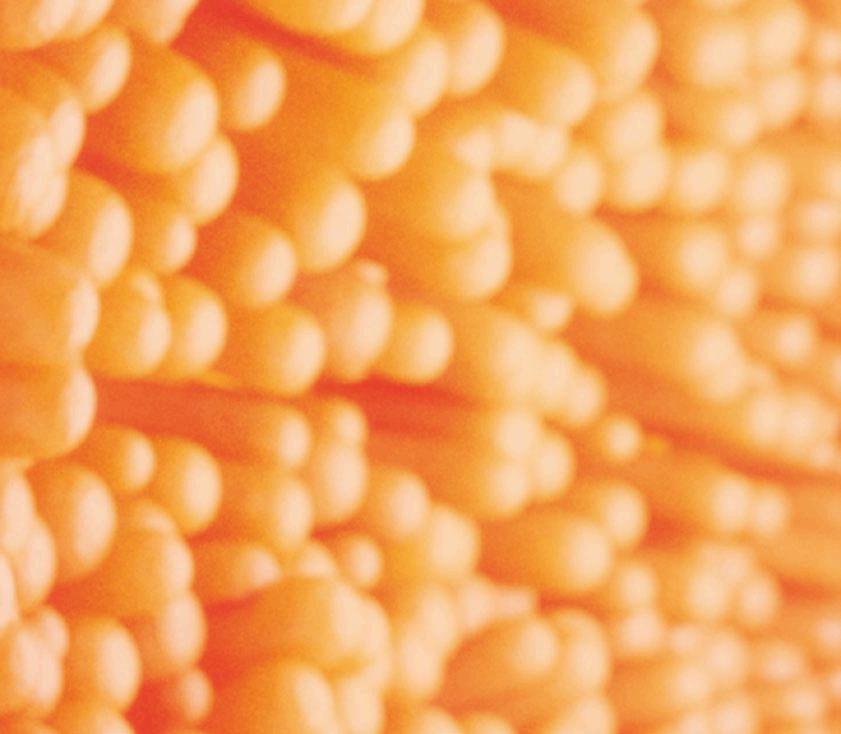
The most recent work carried out by our research group was based on the use of two bioadsorbents prepared organically from kale residues (Brassica oleracea L. ) and lettuce (Lactuca sativa L. ).

Vázquez-Durán et al. (2021), used a dynamic in vitro model that simulated the GIT conditions of birds.
Bioadsorbents were used at 0.5% (w/w) in a diet contaminated with AFB1 (100 μg AFB1/kg).
 Beak
Crop
Proventriculus
Gizzard Intestine
Ceca
Cloaca
Beak
Crop
Proventriculus
Gizzard Intestine
Ceca
Cloaca
The bioadsorbent prepared from kale had an adsorption percentage of 93.6% and that of lettuce was 83.7%
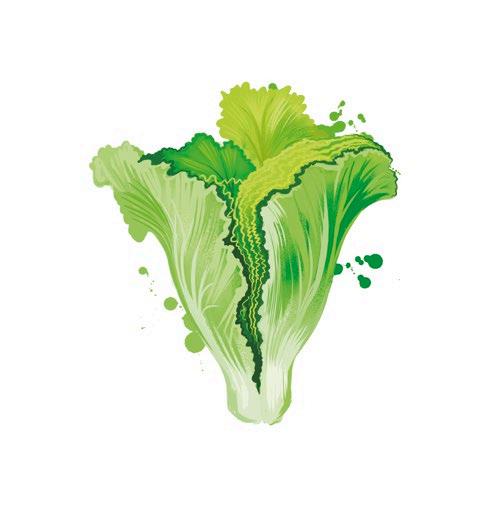
It was elucidated that, if bioadsorbents contain a high number of hydrophobic groups (methyl and aromatic), as is the case with kale, the elimination of AFB1 is more efficient.
In addition, it was shown that chlorophyll has the ability to form AFB1-chlorophyll complexes. Therefore, a high clorophyll content in bioadsorbents will significantly improve AFB1 adsorption.
Taking these results into account, it can be concluded that agricultural by-products represent effective and low-cost mycotoxin adsorbent alternatives when compared to inorganic adsorbents.
Bioadsorbents have significant mycotoxin adsorption potential in in vitro models that simulate bird GIT conditions (exhibiting significant efficacy levels over a wide range of pH values and temperatures).
Bioadsorbents are mainly made up of cellulose, lignin, hemicellulose, pectin, lipids, amongst other compounds. These are rich in different functional groups which are capable of binding with mycotoxins.
The outstanding capacity for binding mycotoxins which is attributed to biosorbents, is based on a set of interactions between mycotoxins and these organic by-products. Including physicochemical interactions such as electrostatics, π–π interactions, hydrogen bonds and the formation of AFB1-chlorophyll complexes.
Agricultural residues as an alternative for mycotoxin decontamination in the poultry industry

DOWNLOAD IT ON PDF
Bibliography avaliable upon request
The gut biome is an essential component of animal health. It needs to grow and mature well in order to ensure resilience in the flock. Signis - the first of a new class of additive, stimbiotics - influences biome development delivering a beneficial microbial population. The healthier the biome, the healthier the profits. Find out why Signis is getting so much attention @ www.abvista.com

Intestinal health is essential to maintain efficient and sustainable functioning of the gastrointestinal(GI) tract within its physiological parameters. Preserving

Nutrinews International had the opportunity to speak with Dr. Edgar Oviedo about intestinal health in poultry and how to approach it from a holistic view. Dr. Oviedo is a professor at the Prestage Department of Poultry Science at North Carolina State University, as well as being


NutriNews International: Dr. Oviedo, welcome, and it is a pleasure to have you with us!
Dr. Edgar Oviedo: It is very nice to participate in these webinars and I hope we have a great start to this new series.
Nutrinews International: Gut health or intestinal health has become a general term in animal production and, more specifically, in poultry production. Could you elaborate on what you think is the best definition for this significant yet broad term?
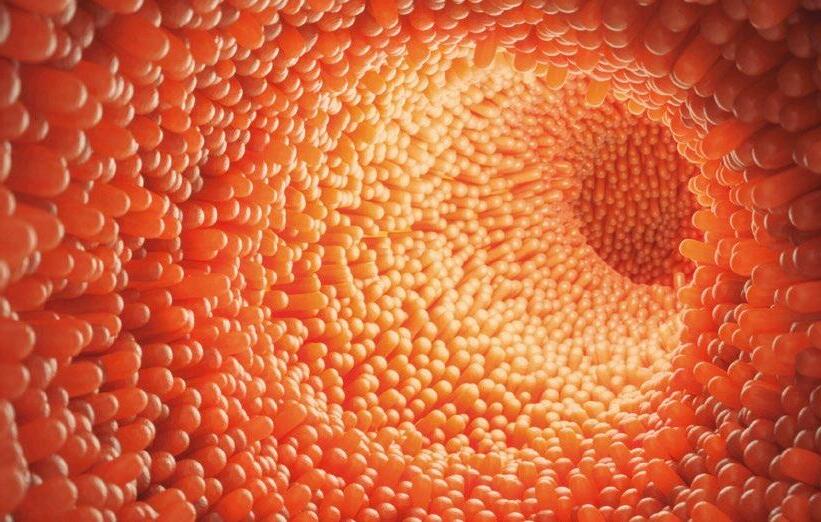
Dr. Edgar Oviedo: I think the best way to define intestinal health is when the animal host, in this case the bird, is able to obtain all the nutrients it requires at the minimum metabolic cost. While at the same time, the intestine can fulfill all of its immunological and endocrinological functions and host bacteria that can coexist with the host. Maintaining those bacterial populations that are considered to be negative in very low levels. Under this definition, what we want is an intestine that is very efficient in nutrient digestion and absorption, without the need of extra nutrients to feed the normal natural microflora. With these nutrients that are balanced you can create a very diverse microbiome which will normally keep pathobionts or those populations that have a pathogenic capacity in low concentrations
Nutrinews International: Antibiotic free production has become a growing trend due to global bans on antibiotic growth promoters (AGPs) as well as due to consumer demands. This situation has modified the way producers and the industry approach poultry farming. Creating a need to find new tools and strategies that help maintain productive yields at a reasonable cost. Do you think this has drawn a greater interest towards intestinal health and has this helped to drive research within related fields?
Dr. Edgar Oviedo: Yes, definitely the current changes in the ways we manage intestinal health in animals, and also in humans has been the main stimulus for a whole new science which focuses on molecular microbiology. Including all the aspects that allow to study the interactions between the intestines and the whole body.
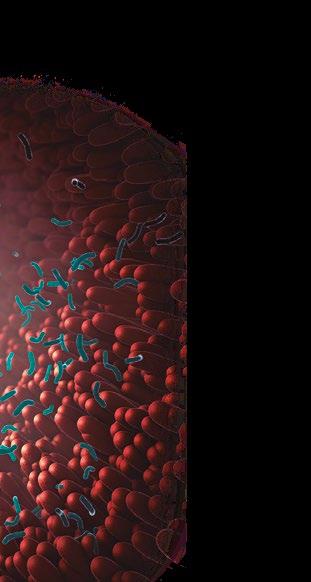
Therefore, nowadays we know more about the microbiome which in the past we called microflora, which 100 years ago or even more, close to 300 years ago were only studied at the level of culture in Petri dishes. With the emergence of molecular methods we have advanced in the understanding of these microorganisms within the past 100 years. Now we know about the importance of diversity in the microbiome, including all the different bacterial populations, and other microorganisms that make up this community which is much than what we could have imagined.
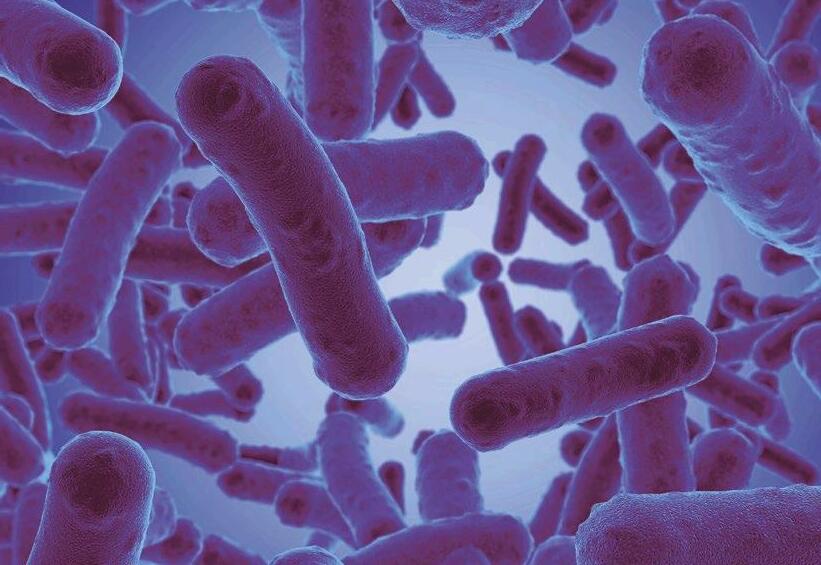
We also now know that the intestine plays a role in many physiological aspects that we had not considered before, like behavior, and even in the immunological responses. Therefore, we now know that this interaction between bacteria and the host is fundamental for any kind of immune response or activity that contributes to maintaining overall health. We now know that mucosas play a very important role for health.
Taking this into account could you tell us a little more about the importance of enhancing nutrient digestibility to preserve normal physiological functions, and what nutritional strategies or other tools are there available to achieve this in modern poultry farming?
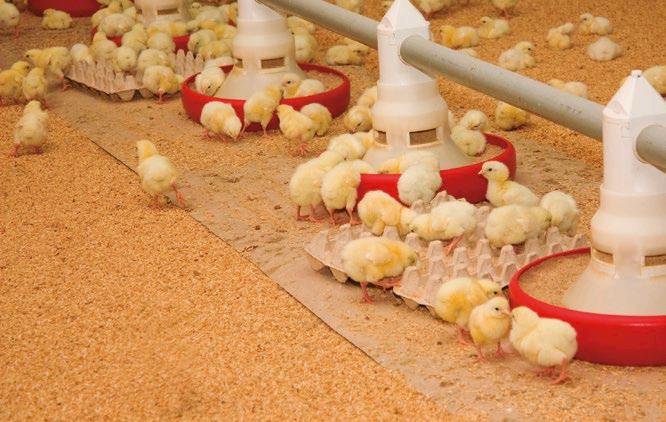
Nutrinews International: When intestinal health is discussed a common mistake is focusing only on controlling intestinal disease like coccidia or specific enterobacteria. This misunderstanding may stem from the fact that these pathogens tend to be found in health issues associated with intestinal health or in antibiotic free programs. However as you have stated before these pathogens are usually the consequence and not the cause of gut health issues. As you point out the actual problem tends to be associated with the presence of excess nutrients in the hindgut.
Dr. Oviedo: Well the main intestinal functions which are always recognized are digestion and absorption. The microbes including bacteria, fungi and even viruses that make up the intestinal microbiome depend on the amount and type of nutrients within the intestine for their development. If we are able to reduce nutrient concentrations in the hindgut like it should naturally happen, many of these microorganisms will maintain their populations in low numbers and we can also modulate the type of microorganisms and the metabolism that they should have within each section of the intestine. Each section of the intestine must have a complete variety of microorganisms that depend on nutrient concentration. Therefore, if we improve digestibility in the foregut, we will basically have absorption occurring in the jejunum and ileum, and the cecum will have a lower amount of nutrients. We can then modulate the microbiome and maintain a better balance with the host. Therefore, digestibility is a key factor for maintaining microbial populations in low numbers.
You asked about additives that can do this job, and there are several options like: enzymes, organic acids, and essential oils. Even the use of probiotics combined with prebiotics offer a symbiotic effect that can contribute to modulating microflora as well as improving nutrient digestibility. It is not only through feed additives that we can improve nutrient digestibility, as we can also enhance it through feed processing. Creating feed ingredients that are segregated according to the age of the animal and their ability to digest the nutrients that are found within that type of feed. This helps the animal to have an improved digestibility. Factors like applying proper temperatures, adequate drying temperatures, even pelleting temperatures influence digestibility. Hence, all of these factors will help us to control intestinal health through the improvement of digestibility.
Focusing on these feed additives that we have available for modulating the microbiome, what trends do you anticipate regarding these types of products and their use within the poultry industry in the coming years?

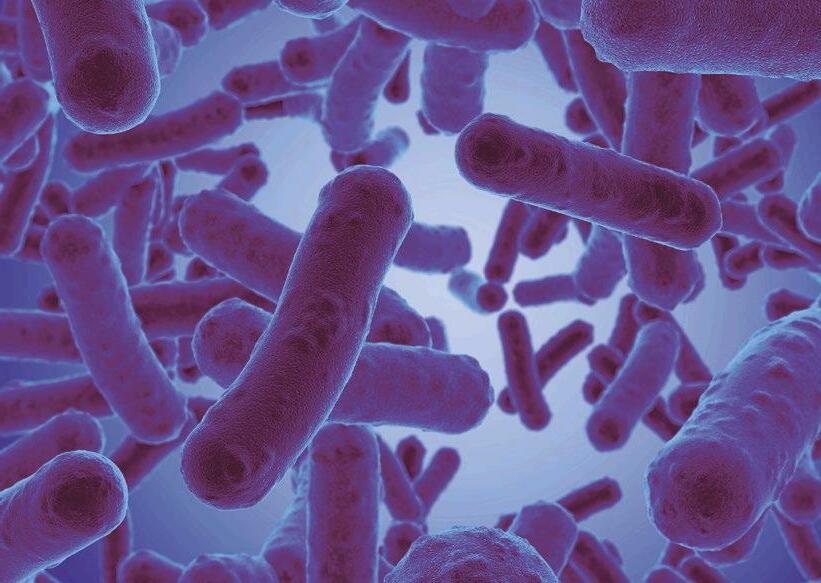
Dr. Oviedo: Yes, we see that enzymes are probably the feed additive that has grown the most in regards to applications, constant innovation and return on investment. We began with phytases in the 50’s, with their main application occurring during the 80’s and 90’s. Later we had the series of carbohydrases that expanded significantly with xylanase as well as amylase and beta mannanase among others. Then, we saw the development of proteases. We now have a new series of enzymes that contribute with the digestion and elimination of certain components like bacterial cell walls which can be harmful to the host when they are destroyed by the action of other feed additives or through normal digestive processes. Therefore, these enzymes help to diminish the negative effects of lipopolysaccharides (LPS) found in bacterial cell walls.

Can you tell us why water quality must be considered as an important factor when talking about gut health and what aspects must be taken into account to ensure its quality? Why is water deprivation something that must be looked after, and avoided when trying to preserve intestinal health?

Dr. Oviedo: As we know water is the nutrient that passes through the intestine even more frequently than feed. Animals and humans consume almost 3 to 4 times more water than feed. Therefore, water volume really impacts many intestinal functions, as well as impacting: microbiota, enzyme concentrations, and acids found within the GI tract. It is known that some of the physical properties of water like pH, and salt concentrations have a buffering effect in the crop and even in the gizzard at the proventricular level, affecting the animal’s digestion. We can actually buffer and reduce acidity in the foregut within these sections which will hamper enzyme function. Therefore, it is important to maintainpH levels from slightly acid to neutral, and reduce the amount of salts that can cause this buffering effect, or the calcium carbonate found in water. Other water contaminants like magnesium sulfate can affect intestinal motility acting as a laxative and modifying the intestinal passage rate. This will have negative impacts on digestibility, as well as causing dysbiosis and creating gut health problems.
Lack of water can cause the most negative effects that we can see on performance. Hence, maintaining water pressure in the lines is critical according to the age of the animals. Due to the fact that when nipple systems are used, these require adequate pressure in order for animals to obtain the necessary amounts of water to fulfill their requirements. Otherwise, this will affect their feed intake, and this imbalance between water intake and feed intake can affect nutrient concentrations and their solubility. Which can also result in dysbiosis and intestinal health issues.
On the other hand, excess of water supply can also cause issues. It is something you did not ask, but it is worth mentioning. In general, we need to think that animals must be efficient regarding water utilization. Sometimes the changes in pressure in water lines can cause excessive dripping on the litter, which will increase its humidity. Leading to ammonia and housing issues related to air and litter quality. This can also favor the proliferation of certain bacteria, or protozoa like coccidia and others which can be harmful for the animals. Therefore, water management is critical to maintain good environmental conditions and to preserve animals’ intestinal health.
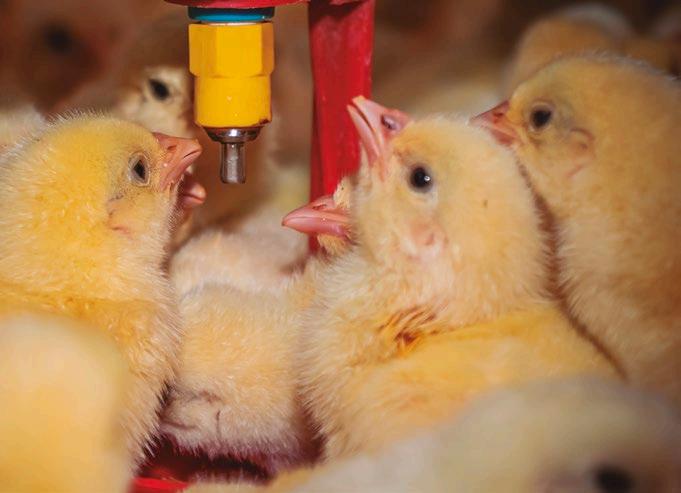
Nutrinews International:
Could you briefly tell us about what types of health programs allow us to establish preventive actions and what biosecurity measures contribute to maintaining high levels of gut health in modern flocks? What tools are there available to measure gut health, and overall gut health status right now? Is it feasible to implement these tools in different productive scales?
Dr. Oviedo: Yes. Let’s start by parts. In regards to the health programs, in general it could be stated that the disease that can have a greater impact on intestinal health is coccidiosis. Thus, the programs to control coccidiosis, include different feed additives like ionophores or other chemical products. There are also other tools like vaccination. Lately, we also have some phytochemicals that can also be used to reduce coccidiosis, or its negative effects. Allowing the bird to obtain immunity against these pathogens without having major health impacts associated with infection. All of these are helpful, and sometimes we require the inclusion of all of them in a program that rotates and helps to maintain a healthier environment. Due to the fact that it is also important to prevent coccidial reproduction in the environment through the management of ventilation and avoiding wet litter like we previously mentioned. Coccidiosis Clostridial infections could be considered as some of the most important intestinal issues. Nowadays we have bacterines which are applied to the breeders and this can help with that control. This type of tool can also help to control Salmonella. In general, the prevention against these pathogens requires good biosecurity measures as you mentioned before.
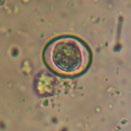

The main factor to take into account is to avoid the entry of new strains into the environment were animals are housed. Therefore, having a closed system that limits the entry of people, rodents or other animals that may act as vectors, and reducing the entry of contaminated equipment, is essential to preventing any health issues. The quality of the feed ingredients is also very important. Making sure that these ingredients are not contaminated with Clostridium or Salmonella for example. There will always be a certain bacterial load, as well as fungi, but it is expected that their levels are within acceptable limits. Mycotoxin levels must be low and within the acceptable limits. All of this will
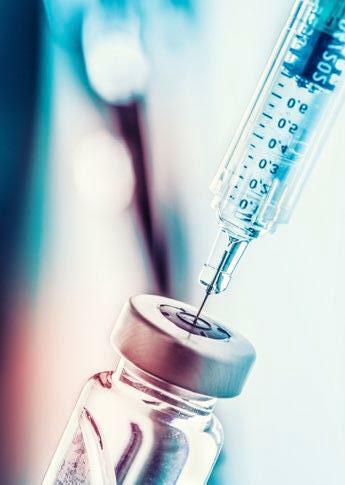
However, when we talk about health, we must consider all the potential diseases that can affect the flock. Therefore, we must also assure control for Newcastle disease, bronchitis, and even Mycoplasma. Due to the fact that although the animal may be sick with a respiratory infection, this will also affect its feed intake, and eventually lead to intestinal health issues.
You asked about markers for intestinal health right? For many years the industry, scientists and veterinarians have looked at specific ways to evaluate the health status of birds and the flock. Making assessments in relation to specific diseases, as well as evaluating intestinal health as a whole. Some indexes have been developed in this regard, and as you may know companies have created scoring systems where they check different parts of the gastrointestinal tract through necropsies. So, there are scores for: crop status, gizzard status, and for all the GI tract. There are also scores for coccidia, as well as cecum scores and fecal scores. These scores are useful, and many people have this data. This helps to track what is going on when we see a lot of health issues, and we are able to detect the diseases that are responsible for such health problem without the flock. So, this is one of the available tools and it has been used for quite a while, but its main disadvantage is that it requires constant surveys through necropsies, which makes it impractical, and it cannot be carried out as frequently as it should in order to have an updated picture of what is going on. For such reasons many scientists have tried to develop analytical tools that correlate blood values, samples from the intestinal tract, as well as histological findings to evaluate intestinal health.
Some have also developed methods to analyze metabolites found within the intestine and in feces. However, these analytical methods may not always be the most suitable as they might not be fast enough. Therefore, nowadays the trend is to try and use metabolic sensors that can identify certain metabolites that can be correlated with adequate intestinal fermentation processes. This occurs when there is a good digestibility, and microorganisms produce certain metabolites that can be associated with a healthy gut. The more we can run these methods on excreta, or through cloacal swabs, instead of on necropsy samples will be much better. Right now we are still using the same technologies we used 30 years ago, but we need to advance soon in order to have sustainable and faster methods to evaluate intestinal health.
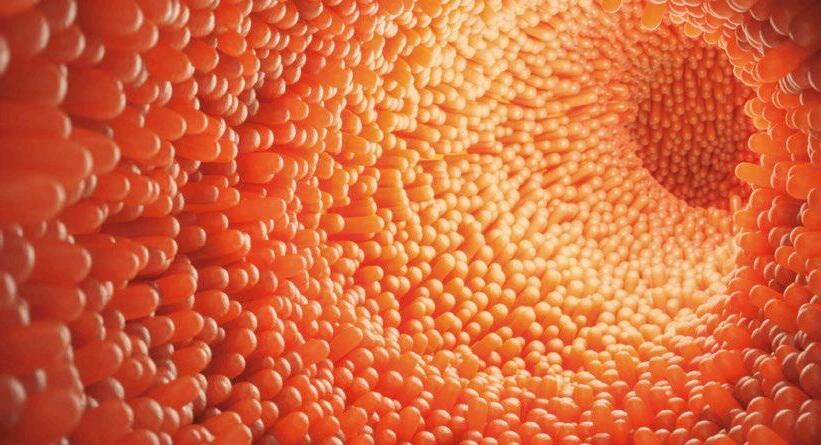
Nutrinews International: That is very interesting. For our final questions. Could you briefly tell us why is it important to maintain adequate breeder and hatchery conditions, and how is this associated with higher intestinal health levels?


Dr. Oviedo: Well the microorganisms of a newborn or a new hatch in this case depend on the maternal microbiome, that the hen will pass to the chick or poult in the case of turkeys or ducks through the reproductive tract. As we now know that vertical transmission does not only occur with pathogenic bacteria like Salmonella. There is also vertical transmission of beneficial or commensal bacteria that colonize the reproductive tract, and transfer on to some parts of the egg. Contributing to the colonization of microorganisms within the embryo that will help develop immunity against future microbial challenges. There are some bacteria that remain within the pores of the eggshell, and upon hatching the embryo will come in contact with them. If these are pathogenic bacteria, they can create intestinal health issues directly from the hatch.
Quite often, if eggs remain in the hatcher for prolonged periods they can become contaminated with pathogenic bacteria like Enterococcus or E. coli. On the other hand, if we have a beneficial microbiome that is transferred from the hen, this will translate into healthy progeny. If we use too many disinfectants that modify the microflora, this can have a negative impact on the progeny. A hatchery with adequate environmental conditions: clean, well ventilated, with the proper humidity to allow a proper development of embryos while avoiding the proliferation of fungi and pathogenic bacteria, can also benefit the embryo. All of these management practices carried out through the process help the bird to be colonized by healthy microorganisms. The proper nutrition of hens, and their adequate management to reduce stress will also contribute to good gastrointestinal development in chicks and assure a good transfer of immunity. Proper incubation conditions will also help the embryo develop a good intestine as well as a whole system of immune and endocrine regulation that will allow it to cope with the challenges that it will face in the farm and in its life post hatch. Therefore, all of these factors, definitely play a significant role in maintaining high levels of intestinal health within the farm.
NutriNews International: Could you give us your final thoughts regarding the importance of gut health in poultry nutrition and production in general? Why is it important to look at it from a holistic approach? Do you think intestinal health will continue to be a subject of interest within the poultry industry in the coming years, and will it continue to strengthen its position as a driver of research and innovation?
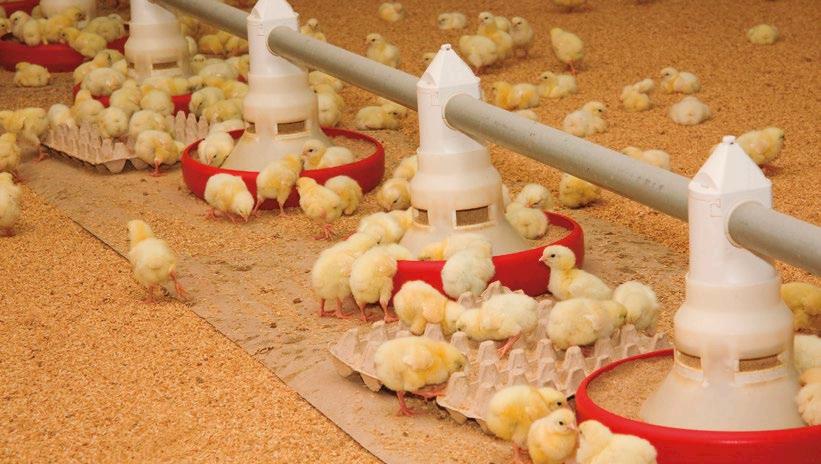
Dr. Oviedo: As we have discussed through this interview, we have explored many factors involving management, health, nutrition which we mentioned a little bit although this is the main focus of this magazine. There are many aspects to successful nutrition that depend on a holistic management of intestinal health. Including management, good sanitary conditions, adequate biosecurity measurements, among others. Intestinal health depends on a holistic view of the whole production system, and even considers the previous generations, in order to achieve high intestinal efficiency at the lowest possible cost, which will also be a success from a nutritional standpoint.
Therefore, this is an area in which we will continue to see greater development and where we will continue advancing because we depend on good intestinal health management to achieve productive efficiency, animal welfare and food safety. Hence, all of these aspects that we have reviewed will end up affecting the sustainability of poultry production. Consequently, today gut health is considered a central part of One Health. A one Health approach that also includes the environment, and the environmental impacts that we are generating through animal production and how we use nutrients in their feeding. Thus, optimizing the utilization of such nutrients at the intestinal level will allow us to move forward, and that is probably the main focus driving the research that we will see in the coming years.
NutriNews International: Thank you Dr. Oviedo it has been quite an interesting chat. On behalf of NutriNews International we want to thank you, and we hope to have you back for future webinars and podcasts.
A holistic approach on Poultry Intestinal Health: Interview Dr. Edgar Oviedo
 Chad Paulk Assistant Professor of Feed Science and Management in the Department of Grain Science and Industry at Kansas State University
Chad Paulk Assistant Professor of Feed Science and Management in the Department of Grain Science and Industry at Kansas State University
Cereal milling has great impact in pig health and production costs. Pig feed costs account for 65-80% of total production costs (Jensen, 1976). This has led producers to take advantage of feed manufacturing practices to maximise the use of raw materials.
Properly managed, the increase in the cost associated with the manufacture of feed translates into an improvement in the performance of pigs.

Good manufacturing practices are essential to ensure a low cost-benefit ratio.
Not only is it important to fully understand each processing method and its effects, but you also need to understand how processing influences:

production costs
the digestibility of nutrients and energy value pig yield
There are two types of mills which are commonly used to reduce the particle size of ingredients: roller mills and hammer mills

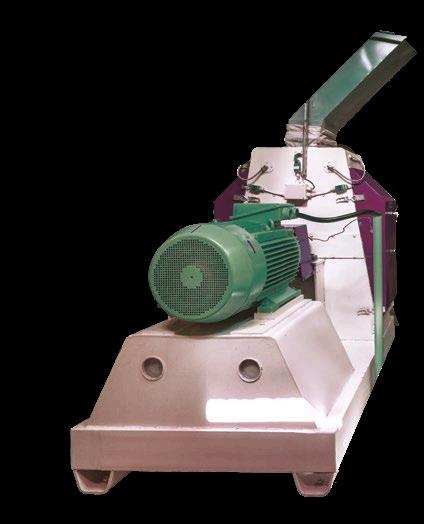
Roller mills reduce particle size by crushing or grinding, thanks to the application of a compressive force on the ingredient.
This process produces a small amount of fine material resulting in a relatively uniform particle size of the grain.
Grains are the main ingredient in pig feed susceptible to grinding. Other ingredients are preprocessed and arrive at the feed mill under acceptable conditions.
Hammer mills reduce the particle size of ingredients by impact grinding (Pfost, 1976), resulting in particles with a more spherical shape. Increasing the amount of fine, pulverized particles, which results in a less uniform particle size (Koch, 2002).
Previous studies have shown that an increase in the amount of non-uniform particles generated by the use of hammer mills results in a greater angle of fall, which translates into worse fluidity (Groesbeck et al., 2006).
On the other hand, in addition to reducing handling characteristics, grinding grains increases the costs associated with milling. These costs include:
manufacturing
1 tonne of grains (kWh/T)
Some data shows that reducing the particle size of cereal grains leads to increased energy requirements and a reduction in the production rate (Gebhardt et al. 2018).
The rate at which these factors change can be altered by: The grain Mill type Grinding parameters
The maintenance of the mills
Roller mills and hammer mills have different operating costs and require different levels of investment.
The initial cost of equipment may seem expensive, but depending on the mill, energy costs for a year may exceed the costs of a new piece of grinding equipment. Understanding the variety of factors that influence the efficiency and production rate of milling can be very beneficial for feed manufacturers.
Considering the negative effects of particle size reduction on milling efficiency, it is important to further investigate whether these losses are justified by improvements in animal
The energy required for the operation of a roller mill or hammer mill over its entire service life will be 10-20 times greater than the cost of the machine itself (Heimann, 2014).
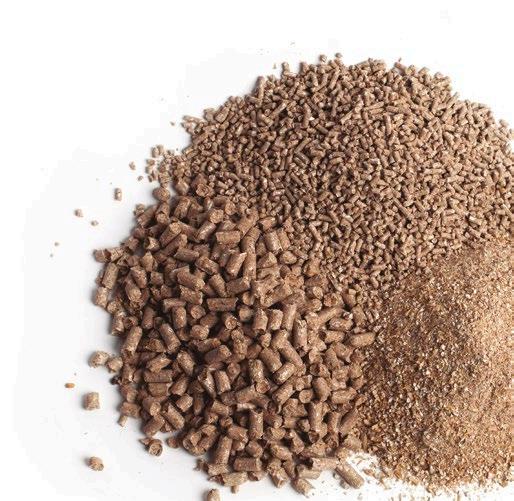
The idea of reducing the particle size of grains before feeding pigs with them came about in the early 30s.
Grains have a protective outer layer that makes it difficult for digestive enzymes to access all of their nutrients.
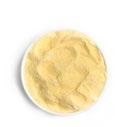
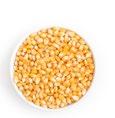
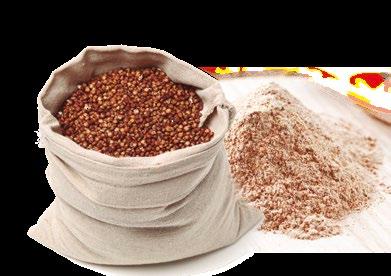
Reducing the particle size of grains through milling exposes protected areas to the action of digestive enzymes, allowing the pig to digest a greater portion of nutrients.
Fraps (1932) used ground sorghum to show that reducing particle size improved the digestibility of nutrients.
Aubel (1945, 1955) continued to work on this idea, demonstrating improvements in feed efficiency when pigs were fed ground corn and sorghum grains.
These experiments laid the groundwork for many zootechnicians to determine the most suitable way in which to apply this processing method in pig production.
Owlsey et al. (1981) observed an improvement in apparent ileal digestibility (AID) and apparent total tract digestibility (ATTD) of dry matter (DM), nitrogen (N) and crude energy of sorghum in fattening pigs by reducing particle size from 1.262μm to 471μm.
Previous studies have also demonstrated improvements in nutrient digestibility thanks to reduced particle size in corn (Lawrence, 1967; Giesemann et al., 1990). However, recent studies revealed differences in the digestibility of particles of different sizes depending on the type of mill used to grind corn.
When employing a hammer mill, authors observed no improvements in energy and nutrient digestibility when the particle size was reduced from 700μm to 300μm. However, when corn was ground with a roller mill, improvements in energy and nutrient digestibility were observed (Patience, 2015).

In contrast, Rojas and Stein (2015) described a linear decrease in the concentration of metabolizable energy (ME) in corn as the size was reduced from 865μm to 339 μm by a hammer mill.
However, Bertol et al. (2017) developed a model that established that from a size of 523-524μm the value of apparent metabolizable energy corrected for nitrogen (AMEn), for corn was not improved.
Based on several studies conducted before 2012, it was concluded that there was a 1.0-1.3% improvement in the efficiency of fattening pigs per 100μm reduction in corn or sorghum particle size when these were reduced from 1,000μm to 400μm (Cabrera, 1995; Wondra, 1995a; Paulk, 2011; De Jong 2012).

Bertol et al. (2017) observed a 6% improvement in feed efficiency when nulliparous sows received diets with ground corn which had a size reduction from 904μm to 483μm. However, the reduction in size did not influence the feeding efficiency of neutered males.

In contrast to a previous study, Gebhardt et al. (2018) observed no improvements in the feed efficiency of fattening pigs when offering them ground corn with small particles (from 581μm to 285μm) obtained by using a roller mill.
As mentioned, Bertol et al. (2017) and Rojas et al. (2015) recorded an increase in ME in corn when particle size was reduced. When formulating balanced diets based on this increase in ME, there were no differences in the feed efficiency of fattening pigs.
It is well documented that reducing the particle size of grains improves feed efficiency of pigs. However, previous studies reveal greater variability as to what can be considered the optimal particle size.

The rate of growth in response to the reduction in particle size is more variable in piglets at weaning. It was observed that the weight gain is lower when the corn fraction is ground with fine particles (approximately 325μm).
This phenomenon is associated with a reduction in feed intake, without influencing feed efficiency. (De Jong et al., 2013a; De Jong et al., 2013b).
However, Bokelman et al. (2014) did not observe a significant impact of particle size on weight gain nor intake. They instead observed an improvement in feed efficiency by reducing particle size from 700μm to 4000μm when the diet was supplied in flour form.
The texture and palatability of the corn fraction in finely ground diets reduces feed intake in weaned piglets (Sola-Oriol et al., 2009).
It has been shown that when given the choice, pigs consume 67% or 8% of the average daily intake if given a diet with a fraction of corn ground to 525μm or 700μm, and 33% or 20% in the case of corn ground to 267μm or 400μm, respectively (Bokelman et al., 2014; Gebhardt et al. 2018).
Weaned piglets are sensitive to diet palatability and a predictable intake reduction is frequently observed when the particle size is less than 500μm.
established that increased ulcer severity was associated with weight gain reductions.

However, other studies indicate that gastric ulcers do not affect growth rate (Backstrom et al., 1988; Guise et al., 1997; Dirkzwager et al., 1998).
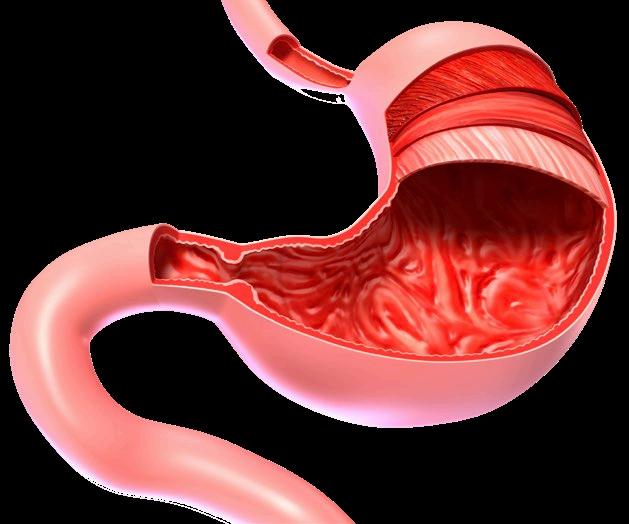
TARGET LOW CARBON FOOTPRINT REFORMULATION

OF THE FEED
Better use of local feedstuffs ENZYMES, AMINO ACIDS, NIR ANALYSIS, PALATANTS IMPROVE FEED EFFICIENCY
Better Feed Conversion Ratio ENZYMES, FEED PRESERVATIVES, BUTYRATE, PROBIOTICS REDUCE EXCRETION
Less emission of nitrogen and phosphorus ENZYMES, AMINO ACIDS, SODIUM SULFATE ENHANCE
Less diseased animals, less mortality
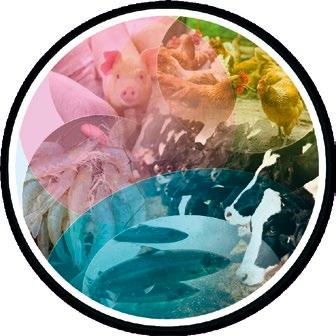

Better fertility and longevity PROBIOTICS, SELENIUM, VITAMINS, BUTYRATE, MYCOTOXINS DEACTIVATORS, AMINO ACIDS

Livestock industries, including pig production, are currently under scrutiny regarding their environmental impacts.
This scrutiny is expected to intensify parallel to rising concerns about climate change and the potential contribution of livestock to global warming.
Although the contribution per unit of meat from pig production systems to environmental impact is relatively low, pork is at least for the time being, the most widely produced and consumed type of meat worldwide. As a result, it contributes significantly to various types of environmental impact.
In 2013, the total contribution of pig production to greenhouse gas (GHG) emissions was estimated to be 668 million tonnes of CO2-eq. Which represents 9% of the total GHG emissions produced by animal production.
In addition, pig production is considered to contribute greatly to the acidification and eutrophication of the environment due to nitrogen (N) and phosphorus (P) emmisions resulting from the storage and use of slurry in crop fields.
 Ilias Kyriazakis, Professor, School of Biological Sciences Institute for Global Food Security, Queen’s University, Belfast, BT9 5DL, United Kingdom
Ilias Kyriazakis, Professor, School of Biological Sciences Institute for Global Food Security, Queen’s University, Belfast, BT9 5DL, United Kingdom
In some European countries, concerns regarding this type of emissions is as relevant to their environmental agenda as concerns about GHG emissions. Considering the fact that 83% of NH3 emissions in the EU are attributed to pig and poultry ptroduction.
6,0
0,9 1,0
Beef (beef herd) Lamb & mutton Beef (dairy herd)
Prawns (farmed)
Cheese Pig meat Fish (farmed) Poultry meat Eggs Milk
Average (light blue column) 10th percentile (dark blue column)
Traditionally, improvements in pig husbandry and management have been aimed at increasing the system’s efficiency. Especially in regards to the efficient use of resources such as feed.
For example, genetic selection has aimed to:
Increase growth rate

Improve carcass features, such as enhancing lean performance
Improve the reproductive performance of sows
Improvements in the use of feedstuffs have also contributed. For example:
The use of exogenous enzymes and synthetic amino acids
Advances in feed manufacturing technology
Improvements in resource use efficiency will also contribute to reducing the enviormental impacts of these systems.
This is because feed associated activities, including slurry management, are responsible for most GHG emissions in pig and other livestock systems. In the case of pigs, it represents more than 70% of the impacts associated with these types of production systems.
Emissions associated with feed production are particularly high if the Agricultural Land Use Change (ALU) is taken into account. Considering deforestation linked to soybean production for example, which is the main protein source used for pig feeding.
Taking all of the above into account, we have recently estimated the evolution of the environmental impact of pig production systems in Great Britain over the last 20 years.
Given that almost 50% of sows in the UK are raised outdoors, both conventional (intensive) systems and outdoor (extensive) production systems were considered.
All the environmental impact categories were considered for the aforementioned reasons:
Greenhouse gas (GHG) emissions.
Enteric methane emissions in pig production are negligible, but methane and nitrous oxide emissions from slurry are more significant.
Given this association between food-related activities and the environmental impact of pig production systems, it is not surprising that the production phase which contributes the most towards these detrimental effects on the environment, is that of the fattening stage. Due to the fact that during this stage feed consumption is at its highest while feed utilization efficiency is low.
Naturally, the opposite occurs during the transition phase. This is especially true for early weaning piglets whose environmental impacts are minimal.
Potential for acidification (PO4 eq) and eutrophication (SO2 eq) (both in freshwater and seawater).
ALU (Agricultural Land Use Change).
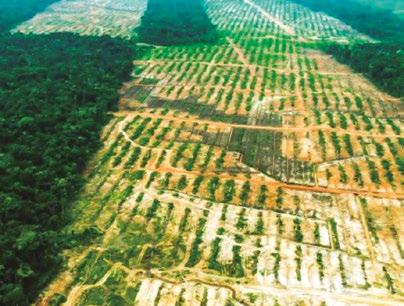
Use of fossil fuels.
It was observed that for the evaluated period of time, greenhouse gas emissions were reduced by almost 40%, while reductions in all of the other environmental impact categories were closer to 20%.
The lowest reduction occurred in fossil fuel use. With it being close to 15%.
All of these reductions occurred almost as a side effect, with no clear industry target nor any significant action from the government.
What makes this all the more remarkable is that pig production in the UK has been the same in 2020 as it was in 2000. Therefore, enviornmental impact reductions are exclusively due to improvements in production efficiency and not due to a reduction in the number of pigs under production regimes!
Figure. Temporal evolution of the relative environmental impact per 1 kg of live pig raised in indoor and outdoor production systems in Great Britain from 2000 to 2017. The baseline (1 unit) is the environmental impact of these systems during the time interval ranging from 2000-2002. The environmental impact categories shown are consistent with LEAP recommendations (FAO, 2018b).
1,2 1 0,8 0,6 0,4 0,2 0
Pigs raised in intensive production systems
Relative environmental impact Relative environmental impact

Global warming potential
Potential for soil acidification
Freshwater eutrophication potential
Agricultural land use
Scarcity of fossil resources
Pigs raised in extensive production systems
Global warming potential
Potential for soil acidification
Freshwater eutrophication potential Agricultural land use
Scarcity of fossil resources
1,2 1 0,8 0,6 0,4 0,2 0 00-02 09-11 09-11 06-08 06-08 03-05 03-05 12-14 12-14 15-17 15-17
potential
First of all, the important changes in animal performance over time. The most significant being an increase in:
Average daily weight gain of pigs in the finishing phase
Slaughter weight of production pigs
Number of piglets born alive (although the number of litters per sow a year has hardly changed)
Sows’ replacement rate
However, an increase in slaughter weight (from 90 to 110 kg) has also been observed. Increasing energy and protein maintenance costs, while making the slaughtered animal less lean

These two trends seem to counter each other out, to a certain extent. However, in recent years, added to the the aim of obtaining leaner carcasses, these have meant a reduction in the enegy concentration of feed, while protein concentration has remained stable over time.
The most significant contribution regarding changes in the environmental impacs attributed to pig production systems, is associated with modifications in feed management practices.
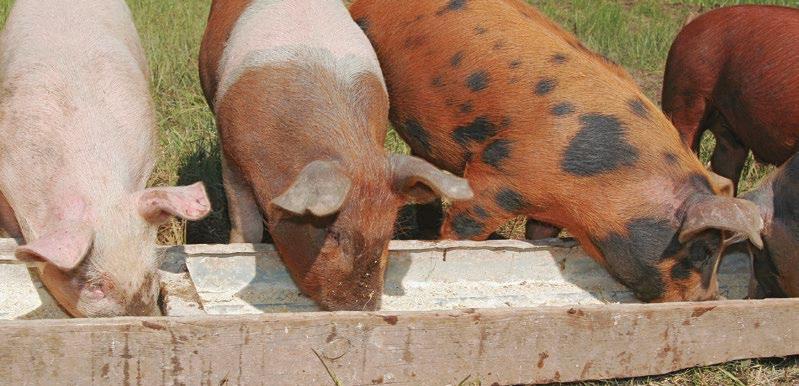
Over time, two important trends regarding the inclusion of certain feed ingredients have been developed:
Oils (expensive) ceased to be present in recent years.
Barley replaced wheat, especially in sow feed.
As discussed before, this resulted from a reduction in energy requirements.
Soybean meal has also been gradually replaced by rapeseed meal, which has a lower energy content as well.
Global warming potential was the most sensitive impact category due to its heavy reliance on the inclusion of soybean meal in feed . Especially for production pigs.
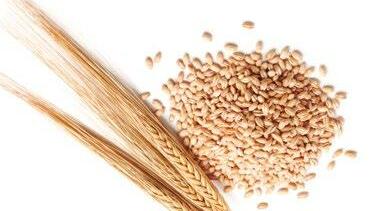
What caused these drastic changes regarding environmental impacts associated with pig production in the UK?
Some of the changes in feed composition can also be explained by changes in feed ingredient prices
The inclusion of rapeseed meal has been adopted during the last stages of the studied period, due to the fact that its price has only increased slightly compared to the price variations of soybean meal.

Sunflower meal has also become an important source of protein since it became available in Britain after 2009.


Higher inclusion levels of co-products in pig feed have been shown to reduce the environmental impacts associated to pig production. Providing both economic and environmental benefits.
Although their impact has not been explicitly estimated, the inclusion of exogenous enzymes and synthetic amino acids in pig feed has increased as these have become more available and economically viable.

The inclusion of agri-food co-products, such as bakery flour and biscuits in feed has increased as cereal prices have risen, but their prices have remained relatively constant.

In summary, the benefits (reductions) in the environmental impacts associated with pig production systems can be attributed to:
1/ 2/
Changes in animal performance, allowing a lower concentration of energy in feed.
production and the potential to reduce its environmental impact
Although similar estimates regarding changes in environmental impacts associated with pig production systems across Europe have not been made mainly due to a lack of adequate data. It is expected that similar trends will be observed.
Changes are taking place regarding the use of cereal sources in pig feed. From which the inclusion of rye seems to be the most promising in terms of environmental impact reductions.
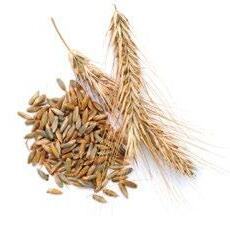
There is a moratorium amongst soybean purchasing companies to not buy soybeans from recently deforested land . However, this rule can be circumvented by having cattle pasture on the land before growing soybeans on it. This implies that the environmental impact associated with the incorporation of imported soybeans is likely to continue.
The question then, is if European pig production should conform with its success regarding environmental impact reductions, or should it explore other possibilities for futher reductions? Advances and trends in pig farming and producction management are likely to contribute to this.
Some of these potential advances and their consequences are summarized below:
Protein levels in feed have been reduced by up to a third, reducing emissions of ammonia (NH3 ) and nitrous oxide (N2O).
The success in using native protein sources, such as rapeseed meal, to replace soybeans (although its amino acid profile is not as suitable for pigs) is remarkable. Rapeseed is also easier to grow in northern European climates.
The use of soybeans in European livestock systems is a controversial issue due to deforestation in Brazil and Argentina, where most of the soybeans imported into Europe come from.
Improvements in pig traits associated with efficiency are likely to continue.
As mentioned above, the objectives of improving the economic performance of pig production have already contributed to reducing the environmental impacts of pig systems and are likely to continue to do so.However, the rate of change of these traits is likely to slow down when a certain limit is reached.
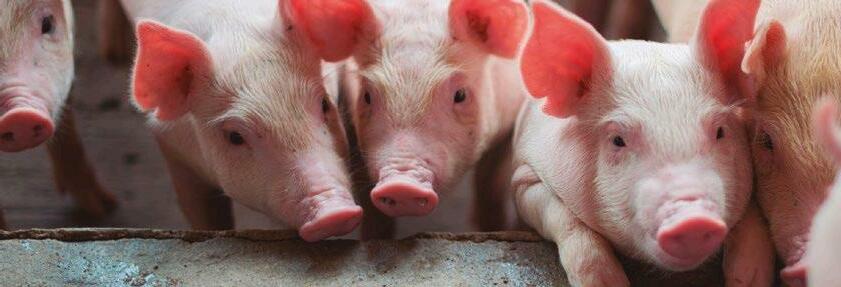
The contribution of pig health to environmental sustainability is rarely considered. However, one of the main consequences of health problems is a reduced efficiency in food resource utilization. Which will end up affecting the fate of emissions.
Therefore, it is no surprising, that improvements in animal health, especially regarding pig resilience (i.e their ability to perform during an infection) have positive effects on environmental impact reductions However, the main challenge remains on how to quantify such benefits.
The availability of novel or alternative food resources is improving at a spectacular rate.
There is plenty of research being done to identify such resources. For example: insect-derived proteíns, algae proteins, microbial cell proteins, etc. Some of these are likely to become cost-effective alternatives to imported protein sources
It is necessary to discuss whether these protein sources, as well as the “new” locally grown protein sources, will also contribute to reducing the environmental impact of pig production systems.
Pigs have traditionally been regarded as waste recyclers, making them very good candidates to play a central role in circular agriculture.
Currently, some of the waste streams of food production end up in incineration processes, without considering the role that pigs could have in their use. As a consequence, a valuable step in the potential use of dry matter as food is lost.
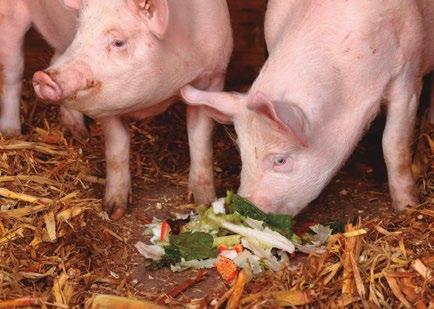
The European industry has increased the incorporaton of materials derived from waste streams, such as discarded food into their productive chains. It is very likely that the industry will continue to increase its dependance on these types of materials in the future.
Technological advances make it possible to improve pig management, thanks to:
A more efficient supply of nutrients according to the requirements of their different growth stages.
Early detection of health and wellness problems
A more effective control of the farm environment.
All this encompassed under the term precision livestock.
Pig production and the potential to reduce its environmental impact DOWNLOAD IT ON PDF
Currently we do not know if its implementation will be linked to environmental impact reductions nor to what extent. However, it is very likely that it will be significant.
There are continuous advances in improving slurry management , both on and off the farm.
A great example of this are anaerobic digesters which use manure and slurry. These also often use other raw materials like grass, rye or corn silage to generate energy.
Being a sector that has not received much support in the past, the swine industry has always strived to adopt new practices and knowledge which guarantee maximum production efficiency.
These have already contributed to reducing the environmental impacts associated with pig production systems across Europe and beyond.
Public policies, such as encouraging the establishment of comparative benchmarks or the adoption of new technologies, can support this success and keep the positive momentum going by further reducing emissions.

The energy present in DDGS as well as its fiber content, protein and digestible phosphorus make this raw material attractive for pig production. Allowing producers to partially replace corn and soybean meal.


According to Curry et al. (2018) the use of corn DDGS in pig feed has increased due to: Its availability
Its high energy value
Its available amino acid and phosphorus values
According to Wang et al. (2008) maize was the first cereal to be used for ethanol production in the United States, although triticale and sorghum were also used for the same purpose in pig feed.

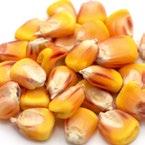
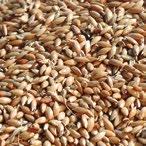

When analyzing the chemical composition of the DDGS obtained from the three grains mentioned above, results show promising potential. Making them interesting alternatives to be considered in the formulation of pig diets (Table 1).
Corn

Although Brazil is one of the world’s largest ethanol producers, most of its production currently comes from sugarcane.
According to data from UNICA (Sugarcane Industry Union) in the report published in the second quarter of 2021, ethanol from corn reached 2.57 billion liters of production during the 2020/21 campaign, which marked an increase of 58.13% compared to the previous campaign.
Participation of ethanol obtained from corn:
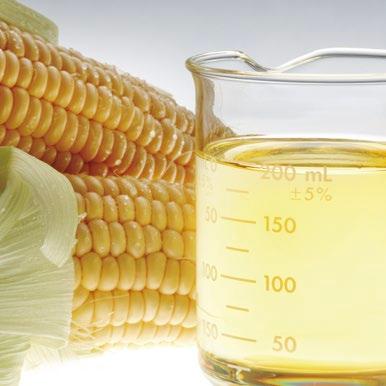
The production of biofuel in South-Central Brazil totaled:
These results indicate a trend towards:
An increase in production levels.
A subsequent increase in DDGS availability in the country.
8,45%
As for sorghum,it is an energy concentrate, and the second most important cereal for pig feeding in Brazil.
It is the most resistant to water stress
Less demanding in regards to soil fertility when compared to corn.
This represents an opportunity that should be considered by the pig production chain.
Its commercial value is about 80% of the value of corn.
Its biological value reaches 95% of the value of maize
In many recent studies, low-tannin sorghum with adequate processing demonstrated equal performance for pigs relative to maize-based diets, thus being able to completely replace dietary corn.

When talking about DDGS obtained from sorghum grains, the values of digestible fiber and metabolizable energy are lower than those obtained with corn DDGS (Corrassa, 2019)
In addition, some studies indicate that a greater inclusion of sorghum DDGS causes worsening of yield and lower feed efficiency for piglets, possibly associated with a variation in the nutritional composition of each source of DDGS, the amounts of solubles added in the diet and the adaptation of animals.
Therefore, it is important to correctly assess the situation and economic viability for the use of this raw material.
On the other hand, both maize and sorghum DDGS contain relatively high concentrations of phosphorus (P), which are highly available to pigs. This reduces the need to add inorganic phosphorus in the diet, which is quite significant for feed costs.
Along with corn and sorghum, another potential cereal to be used as a source of DDGS is triticale. A winter cereal, resulting from the hybridization of two different species: wheat and rye.
The crude protein content of the grain varies between 9% and 20% of dry matter and its lysine content, which is a limiting amino acid in most cereals, is higher than that found in wheat or rye.
The higher lysine content in triticale allows to reduce the percentage of soybean meal in the diet. However, its lower energy value may lead to worse feed conversion in certain cases.
Starch values vary 66% to 73% of dry matter and the largest fraction of Nonstarchy polysaccharides consist of arabinoxylans, which are considered anti-nutritional factors for monogastric animals.

Overall growth performance due to high viscosity and water retention properties
Triticale has an auto-amylolytic enzyme system, which collaborates in the conversion of large amounts of starch into fermentable sugars.
Modern triticale crops are considered competitive feedstocks for ethanol production. When comparing bioethanol production costs for triticale, rye and wheat, Rosenberg et al. (2002), found that triticale presented the lowest cost per liter.

This can supplant the need to include enzymes for starch degradation.
On the other hand, phytase activity for this cereal has been described as intermediate between that of rye and wheat.
This was due to the high ethanol yield per hectare, which may favor the industry’s interest in the grain. Resulting in greater availability of the DDGS generated from this activity.
One factor compromising the use of DDGS in rations is nutritional quality. Corn and other grains used in ethanol manufacturing can have different nutritional compositions. These can directly interfere with the nutritional variation of this by-product.
Spiehs et al. (2002) and Belyea et al. (2010) state that certain stages within production, such as: fermentation and drying time, as well as the temperature to which ingredients are subjected to, can interfere with the results of DDGS analyses.

The Maillard reaction occurs in food, as a result of a chemical reaction between an amino acid and a carbohydrate.
A degradation process occurs which forms compounds of dark coloration (maloidins).
Depending on the temperature of the process for obtaining DDGS, there may be amino acid variations when comparing the chemical analyses of products from different companies. There may be damage to the ingredients due to high temperatures and humidity, which are favorable for initiating a Maillard reaction, which reduces amino acid concentration and digestibility (Almeida et al., 2013).
There is also a formation of volatile compounds, which are responsible for the product’s characteristic odor and ther change in its visual appearance.
The reaction depends on the temperature and the time of heat exposure to which the food is subjected (Francischini et al., 2017).
Considering that grain starch is used in biofuel production, proteins, fats and fibers remain available for animal consumption when DDGS is offered as an ingredient in the ration.
When analyzing the nutritional composition of DDGS from corn, corn, sorghum and soybean meal (Table 2), the values of metabolizable energy, dry matter, available phosphorus, ether extract and crude fiber stand out. This is worth mentioning as the latter are two of the main ingredients in pig diets.
For such reason, the resulting byproduct of corn can be used both as a substitute for corn and soybeans.

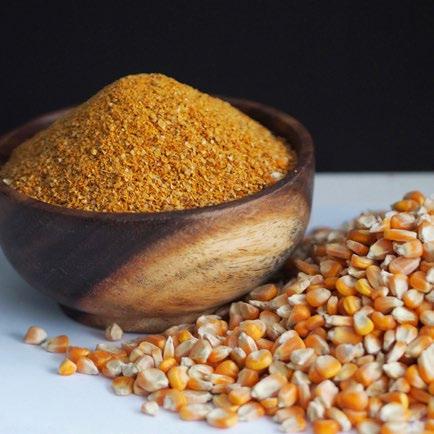
It is worth noting that due to its high fiber content, it’s necessary to include exogenous enzymes within the ration.
Following this train of thought, Dantas et al. (2020) revealed the efficacy of using DDGS combined with a multienzyme complex. Showing that a 25% inclusion level for DDGs did not impact animal performance during growth and termination. While the inclusion of the multienzyme complex improved digestibility and intestinal microbiota profiles. This represents an advantage in production systems, as it allows competitive dietary costs when compared to traditional diets.
In relation to amino acid composition, DDGS from corn have higher percentages than those found in sorghum and corn grains.
Item DDGS (%)¹ Corn (%)² Sorghum (%)² S.meal (%)²
Metabolizable Energy (Kcal/Kg) 3590 3360 3358 3179
Dry Matter 91,06 88,90 87,10 89,60
Crude Protein 28,60 7,86 8,75 45,40
Calcium 0,04 0,02 0,03 0,34
Available Phosphorus 0,30 0,06 0,07 0,19
Sodium 0,02 0,01 0,02 0,02
Digestible Lysine 0,28 0,18 0,20 2,80
Methionine 0,56 0,16 0,15 0,61
Methionine+ Digestible Cysteine 0,84 0,33 0,30 1,28
Digestible Threonine 1,34 0,31 0,28 1,78
Digestible Tryptophan 0,13 0,06 0,10 0,64
Digestible Arginine 0,69 0,37 0,35 3,35
Digestible Valine 1,20 0,36 0,44 2,22
Digestible Isoleucine 0,86 0,26 0,35 2,13
Digestible Leucine 3,37 0,95 1,17 3,51
Digestible Histidine 0,37 0,24 0,20 1,20
Digestible Phenylalanine 1,17 0,37 0,46 2,34
Phenylalanine+Digestible Tyrosine 2,44 0,65 0,81 4,00
Ether Extract 6,46 3,81 3,35 1,95 Crude Fiber 9,00 1,73 2,89 4,86 NDF 50,00 13,80 11,20 13,60
Source: 1Modified from Carassa et al. (2021); 2 Modified from the Brazilian tables for poultry and swine (2017).
In a study by Estevam et al. (2018), when DDGS was included at weaning, this resulted in variations in the performance of piglets fed increasing levels of DDGS. This was analyzed over several studies.
According to the authors, this variation is related to different sources of DDGS and the composition of the ingredients analyzed in each experiment. Taking into account that in different studies where the same inclusion levels were used, there were performance variations.
Current animal production systems, require new feed ingredients that contribute to improving animal performance at reasonable costs, with sustainability as a main focus. Under such scenario DDGS represent a promising ingredient for pig diets.
It is an opportunity to reduce feed costs, while having growing projections in regards to its availability.

Use of DDGS as an ingredient in the formulation of pig feeds
DOWNLOAD ON PDF
| Use of DDGS as an ingredient in the formulation of pig feeds
Weaning is considered as one if not the most demanding phase in a piglet’s life. During this period animals are challenged with significant stress, causing negative impacts on performance and in some cases this can even result in mortality.
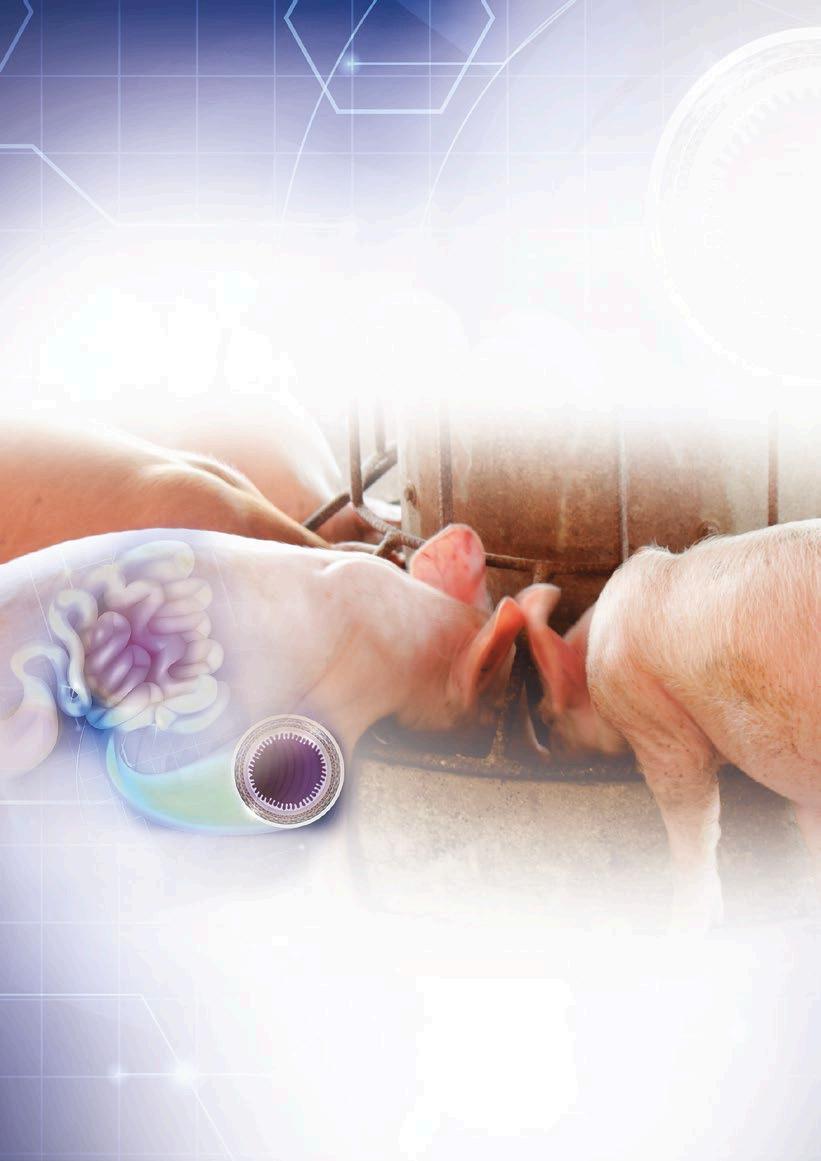
The physiological aspects of weaning have been widely discussed by Lallès et al. (2007) and Montagne et al. (2007) who suggested that this process can be divided into 2 well-defined stages:

The first of these stages, lasts approximately one week after weaning, and it is characterized by marked variations in the structure and function of the gastrointestinal tract, coupled with reductions in feed intake.
There is no current consensus amongst authors regarding the mechanisms through which post-weaning stress affects the intestinal structure.
Pluske and Williams (1996) indicated that changes in enzymatic activities and gut morphology observed in weaning piglets could be directly triggered by stress or by reduced daily consumption. Considering the fact that anorexia is common during this stage.
This results in a lower production of hydrochloric acid (HCl) by the parietal cells of the stomach, which hinders the beginning of the digestion process. This leads to intestinal modifications such as a reduction in enzymatic activity at the brush border, which causes an accumulation of digestive content in the distal sector of the intestine. This in turn increases the risk of post-weaning diarrhea due to bacterial proliferation (Kenworthy and Allen, 1966; Hampson, 1986).

The second phase lasts from 7 to 15 days post-weaning and is a period characterized by the piglet’s progressive adaptation to the solid diet.
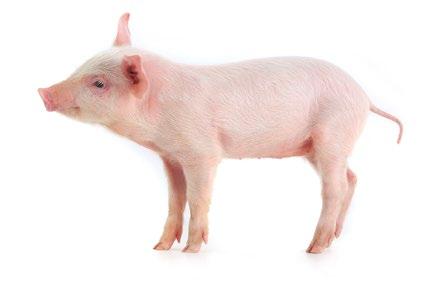


Brooks et al. (2001) concluded that approximately 10% of animals weaned at 28 days of age do not eat any food during the first 48 hours.
Amongst the noticeable changes during this period, there is an increase in size of the jejunum mucosa thanks to greater nutrient availability within the intestinal lumen, which promotes the growth of intestinal villi. In addition, the size of the pancreas increases during this stage, recovering enzymatic activity (Montagne et al., 2007).

Considering the fact that every year new regulations are implemented in regards to antibiotic use, lignocellulose presents itself as an additive with various functions that can help avoid post-weaning diarrhea, and modulate the piglet’s intestine.
By definition, lignocellulose refers to the dry plant matter that constitutes the woody cell walls of plants. Composed essentially by intimately associated cellulose and lignin. In its classification as dietary fiber it is grouped as an insoluble fiber with low fermentability.
Mentioning lignocellulose or insoluble fiber as a beneficial feed additive that can contribute to controlling piglet diarrhea seems somewhat crazy. However, reality has shown quite the opposite.
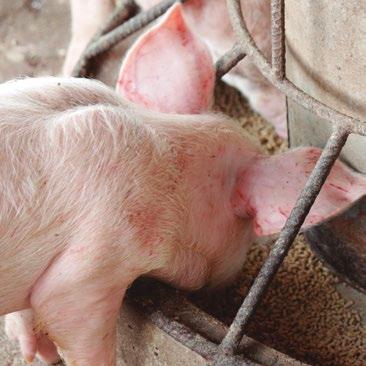
When talking about fiber in diets, the first thing that comes to mind is that this nutrient dilutes other nutrients within the ration, which results in diets with lower energy and protein values.
On the other hand, fiber is an indigestible substrate for piglets, as these lack specific enzymes for its digestion.
Lignocellulose has a low fermentation capacity. However, it is sufficient to modulate the gut environment and produce short-chain fatty acids (SCFAs).

The stomach of lactating piglets has a low retention capacity. This has to do with the fact that milk is a highly digestible food source, and does not require excess stomach degradability. Therefore, understanding the physiology of this organ is fundamental when transitioning from a liquid diet to a solid diet.
Another point to consider is the acid absorption rate provided by each of the ingredients within a solid ration.
This index is defined as the resistance presented by a specific feed source towards the pH reduction exerted by gastric acid.
There are ingredients such as proteins, calcium, phosphorus and zinc oxide which provide a level of resistance against gastric acidity.
This effect results in poorly digested chyme passing into the intestine. The presence of poorly digested chyme in the intestinal lumen favors exponential bacterial growth and leads to the onset of post-weaning diarrhea.
The effects of lignocellulose on the stomach are the following:

The inclusion of insoluble fiber increases stomach size. This generates increased production of hydrochloric acid which reduces the pH of stomach content (Fliss, M., 2017)
At the small intestine level, the effects of weaning are negative. This includes:
Reduced intestinal transit, due to multiple factors, such as: decreased enzyme activity, inflammation, reduced intestinal muscle tone.
When chyme is present under reduced intestinal movement, bacterial proliferation and the subsequent onset of diarrhea are common consequences.
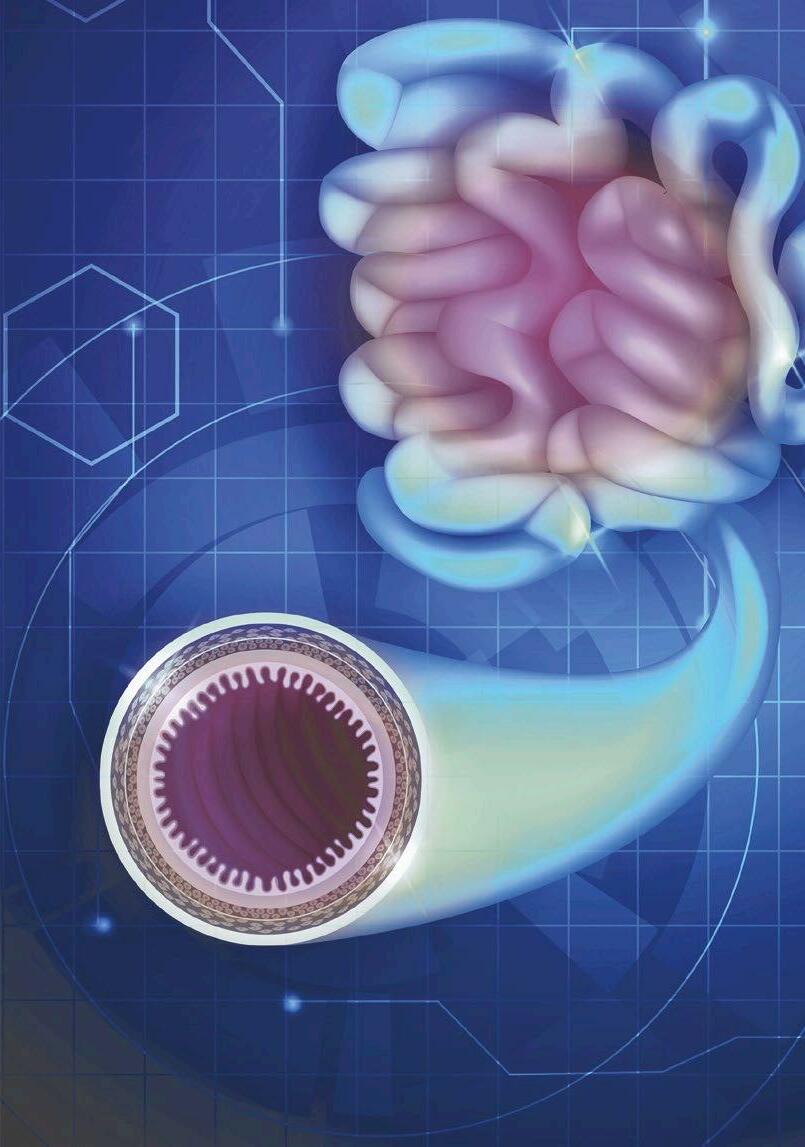
During the first 4 days of weaning, villi length becomes seriously reduced and crypts become deeper.
Lignocellulose has the characteristic of binding water. This characteristic allows to reduce gastric emptying, which modifies stomach peristalsis, and generates changes in the mixing. Gastric retention increases protein digestion and starch breakdown.
Lignocellulose stimulates feed consumption, which in turn stimulates the stomach to produce more hydrochloric acid.
These structures can take 5 to 7 days approximately to recover. This change is related to stress and the lack of feed intake. Which hinders the maintenance of this tissue. Enzymatic reduction within the intestine. The change of diet and lack of appetite, generates a reduction in enzymatic production of the pancreas (maltase and aminopeptidase). This enzymatic reduction results in a greater proportion of undigested chyme. Presenting a larger feed substrate for bacterial colonization.

In their review, Wenke et al, show that when there is a greater amount of undigested chyme within the piglet’s small intestine, microbial activity is not limited to the colon and will reach the upper portions of the intestine.
The presence of bacteria at the level of the small intestine translates into: greater amounts of bacterial metabolites, toxins, disruption of intestinal integrity, intestinal wall permeability, as well as increased presence of feed-associated antigens within the interior of intestinal walls.


This imbalance generates a release of proinflammatory cytokines IL1, IL6 and TNF B which increases the risk of intestinal function disorders.
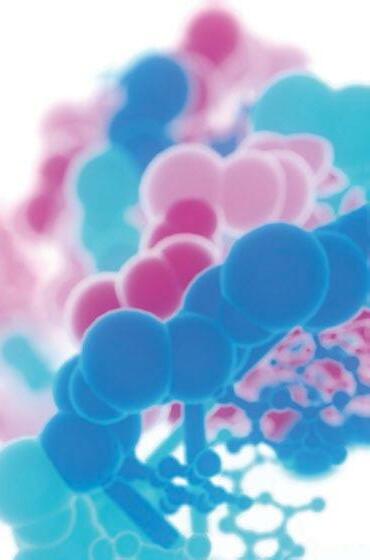
The inclusion of insoluble fiber in the diet promotes the proliferation of a microbiome composed by beneficial bacteria. This reduces the proliferation of pathogenic bacteria at the intestinal level (Hanczaksowska, 2008).
The contribution of insoluble fiber in the diet promotes the proliferation of a microbiome composed of beneficial bacteria. Therefore, the proliferation of pathogenic bacteria at the intestinal level is decreased by this change in bacterial population (Hanczaksowska, 2008).
Lignocellulose is an ingredient that increases the concentration of short-chain fatty acids (acetic, propionic and butyric) in the large intestine. The increased production of these fatty acids is due to the microbial fermentation which occurs at this level. (Chen, 2019).
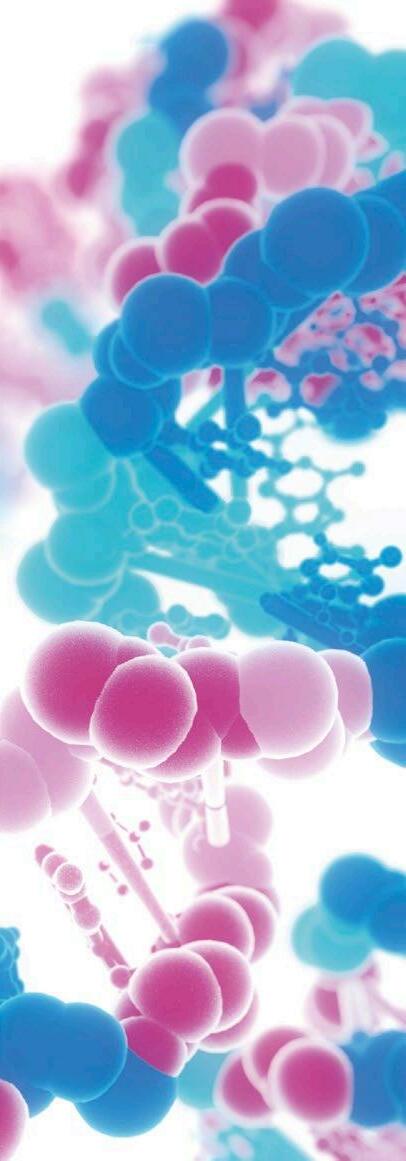

At the colon level, it provides a longer retention time of digested food. It is within this portion that the greatest microbial activity is observed in pig intestines. This characteristic represents greater fecal volumes.
A longer retention time in the colon allows a more efficient proteolytic fermentation of ammonium and amines. Reducing the concentration of such compounds in piglet feces.
The presence of insoluble fiber reduces ammonia content in colonic chyme. This can be interpreted as the result of increased nitrogen incorporation into microbial protein due to the growth of microbiota, estimated by the provision of additional amounts of fermentable energy.
This is considered an additional benefit for this additive as it reduces endotoxemia generated by protein fermentation and energy expenditure due to urea excretion.

The inclusion of insoluble fiber increases the genetic expression of occludin and claudin proteins These proteins are responsible for keeping the intestinal epithelium attached between cells. When this mechanism is deficient, intestinal permeability occurs, which generates a very strong immune response (Chen, 2013).
of insoluble fiber and lignocellulose inclusion in piglet diets
Weaning produces negative effects on the gastrointestinal system of piglets. In this regard, the inclusion of lignocellulose concentrate has a wide variety of beneficial characteristics that can help to counter such effects.

Lignocellulose should be considered as a tool that contributes to the reduction of antibiotic use in pig farms.

Due to its ability to stimulate the production of short-chain fatty acids, it can replace other additives that are included in feed with similar mechanisms of action.
Finally, the incorporation of lignocellulose in piglet diets can also improve feed digestibility.
| Effects of insoluble fiber and lignocellulose inclusion in piglet diets

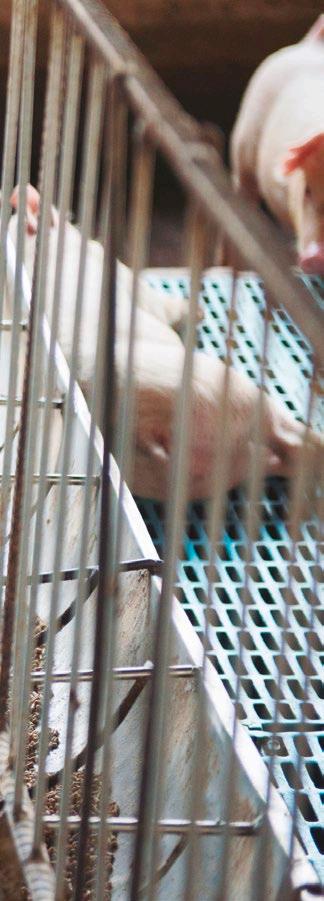
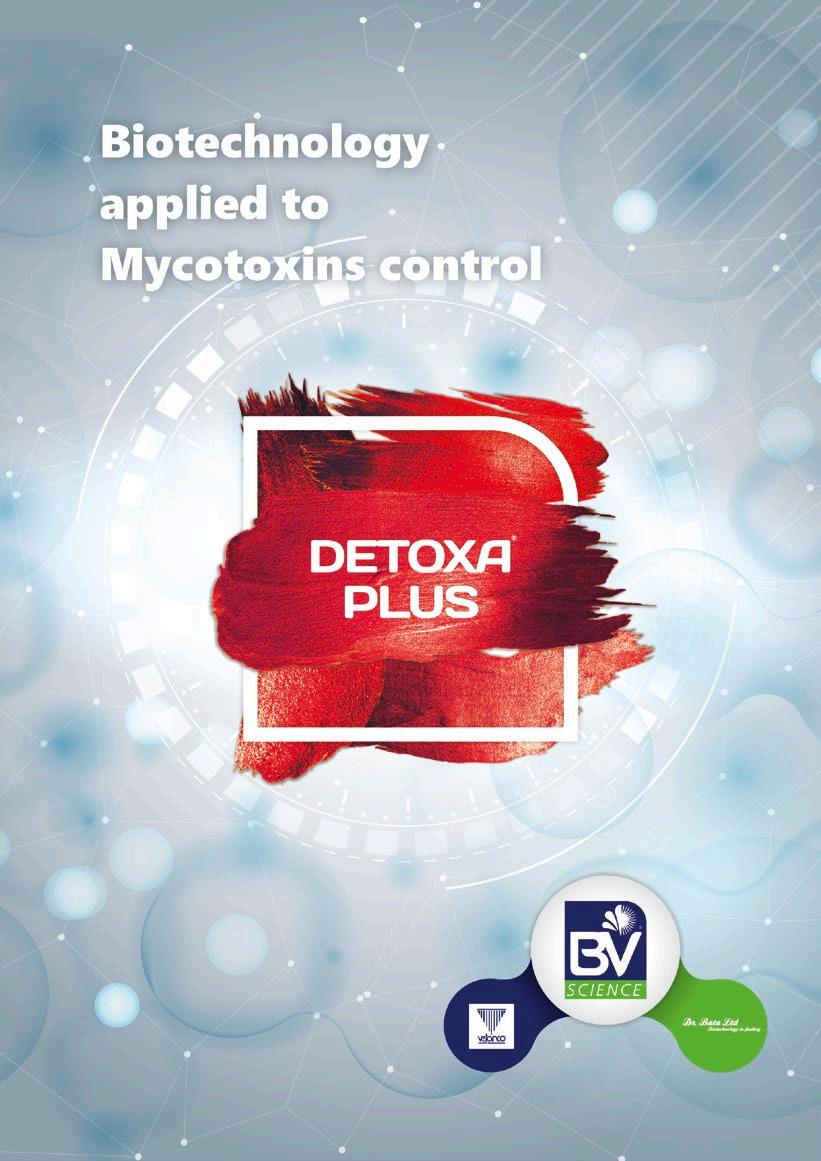
Ruminants (such as cows, sheep and goats) are often considered big contributors to climate change due to their methane (CH4), emissions.
While this is true, it is actually part of an important natural cycle that has been occurring since the beginning of life, known as the biogenic carbon cycle.
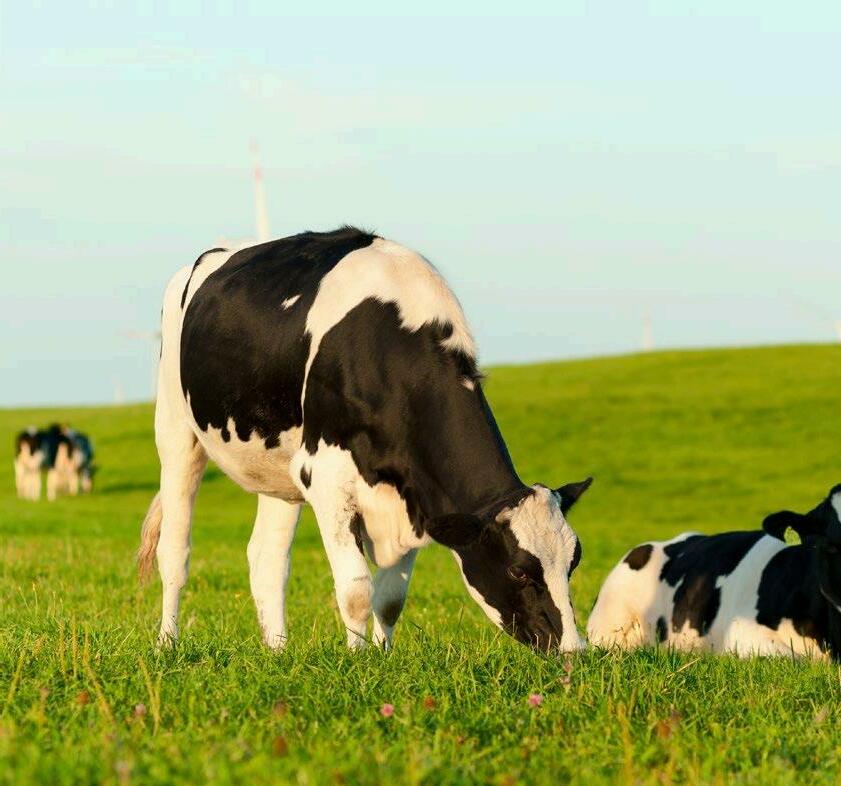
The biogenic carbon cycle the ability of plants to absorb and sequester carbon.
Plants have the unique ability to remove carbon dioxide (CO2) from the atmosphere and deposit that carbon in their leaves, roots, and stems while releasing oxygen into the atmosphere.
This process is known as photosynthesis and is fundamental to the biogenic carbon cycle.
When plants perform photosynthesis, carbon is mainly converted into cellulose, which is a carbohydrate and one of the main building blocks of plants.
Cellulose turns out to be the world’s most abundant organic compound . It is found in: Grasses, Shrubs, Crops, Trees, etc.

Cellulose content is particularly high in grasses and shrubs found in marginal lands. These are usually areas where cereal grains and other edible crops for human consumption cannot be grown.

Two-thirds of all agricultural land on the planet is marginal, filled with cellulose-rich grasses that are undigestible for humans.
However, guess who can digest the cellulose found in the grasses and shrubs of marginal lands?

Ruminants ingest this plant material, obtain energy from it and recycle cellulose… As a result, they also ingest carbon!
Ruminants are made to digest cellulose. They consume grasses and other plants which are high in cellulose and are capable of assimilating the carbon stored in it through enteric fermentation
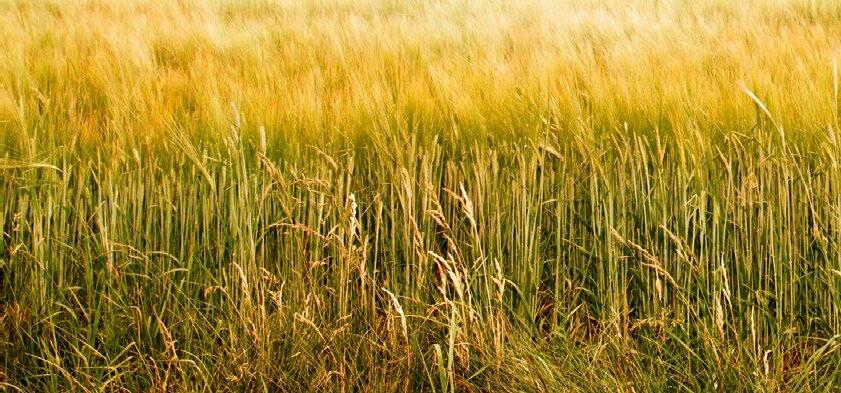
They can use this carbon to cover vital functions such as growth, milk production as well as other physiological and metabolic processes
As a result of cellulose consumption , livestock lose carbon in the form of CH 4 and therefore return the carbon sequestered by plants into the atmosphere.
After approximately 10 years, CH 4 breaks down (hydroxyl oxidation) and is converted back into CO 2 [CH 4 –> CO 2 + H 2 O].
Once converted to CO2 , plants can uptake it once more through photosynthesis and fix that carbon into cellulose.
Cattle then consume these plants and the cycle begins again.
In essence, CH4 emitted by livestock does not add new carbon to the atmosphere, considering the fact that after 10 years this carbon is reused by plants to synthesize carbohydrates.
Therefore, ruminants are part of the natural carbon cycle through the biogenic carbon cycle. (Liu, Proudman & Mitloehner, 2021).
Figure 1 outlines the biogenic carbon cycle:
Carbon from atmospheric CO2 is captured via photosynthesis and stored in plants in the form of cellulose as well as being deposited in the soil.
The carbon contained in plants is ingested by ruminants. These release CH4 via belching, as well as in manure stored in the soil.
After 10 years, CH4 oxidizes and becomes CO 2.
Carbon is extracted from CO 2 in the atmosphere and stored in plants in the form of carbohydrates. These are ingested by cattle.
Subsequently carbon found in the form of CH4 is released back into the atmosphere
And the cycle continues.
Grazing cattle help remove greenhouse gases from the air by stimulating further plant growth, which in turn accelerates CO 2 absorption from the air.
Dung beetles can recycle nutrients found in grasses and help store carbon in the soil.
Therefore, such activities stimulate carbon sequestration in plants and soil, while removing it from the atmosphere.
The biogenic carbon cycle is a relatively fast cycle.
The natural carbon cycle between ruminant animals, plants, and the atmosphere takes place over a relatively short period of time (approximately 10 years).

In comparison, carbon exchange between the atmosphere and geological reserves (such as deep soils, seabeds, and rocks)occurs within the span of millennia, 1000 years or more (Allen et al., 2018).
| Methane and the Biogenic Carbon Cycle
We can consider an average of approximately 1000 years of permanence in the atmosphere for CO 2 derived from the burning of fossil fuels (Figure 2).
Why does the extraction and burning of fossil fuels have a greater impact on climate change than the biogenic carbon cycle?
This is because it takes a minimum of 1000 years for CO 2 released from fossil fuel burning to be deposited back into geological reserves.
To put this into perspective, the CO2 released by a car today, will remain in the atmosphere, exerting a warming effect on climate, that will last longer than your life, the lives of your children and that of your grandchildren.
Thus, the long-lasting impact of burning fossil fuels on climate (average of 1000 years) is more significant than methane emissions from livestock. Considering that the latter are part of the relatively short-term biogenic carbon cycle (10 years on average).
Therefore, if methane emissions from cattle remain stable or are reduced, fossil fuels hold greater long-term impacts on climate than those associated with the methane production of ruminants.
Therefore, with stable livestock populations (neither growing nor decreasing), the amount of CH 4 produced by ruminants is actually balanced by the decomposition-oxidation of CH 4 that occurs in the atmosphere.
The rate at which CH 4 is produced by ruminants is equal to the rate at which it is decomposed into CO 2 (oxidation via the biogenic cycle) which is subsequently fixed by plants through photosynthesis.
CO2 is a gas that accumulates over time and remains in the atmosphere.
Methane (CH4 )is a gas that is destroyed at the same rate as it is emitted.
Methane and the Biogenic Carbon Cycle
DOWNLOAD IT ON PDF
Biochem‘s global feeding team can help you improve the health and performance of your animals. We offer solutions for every animal species, every production segment, and every climate zone.
